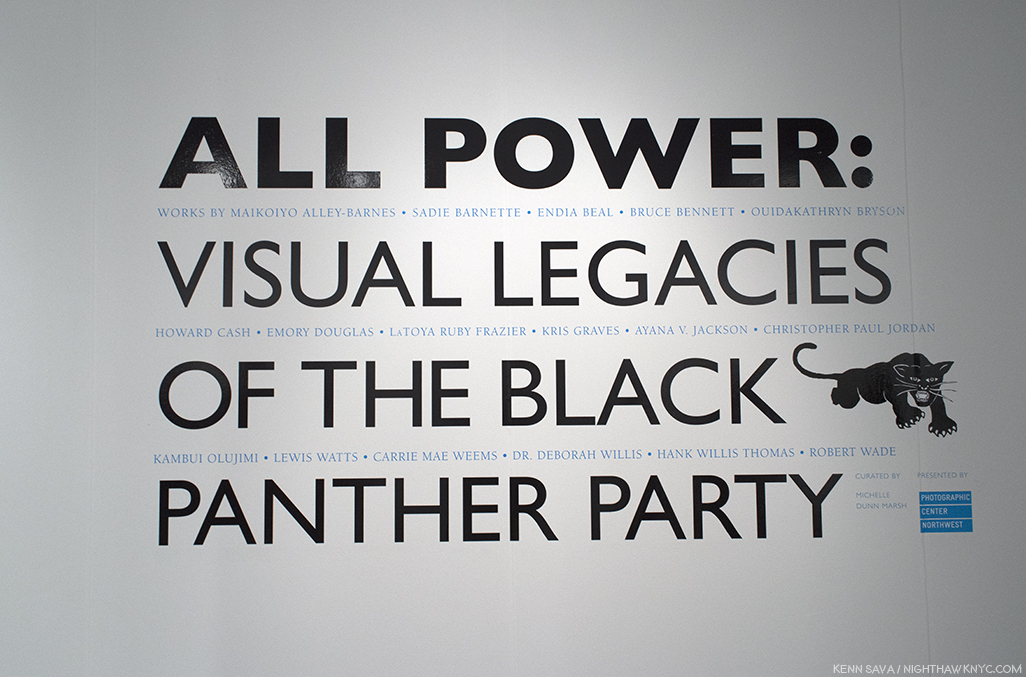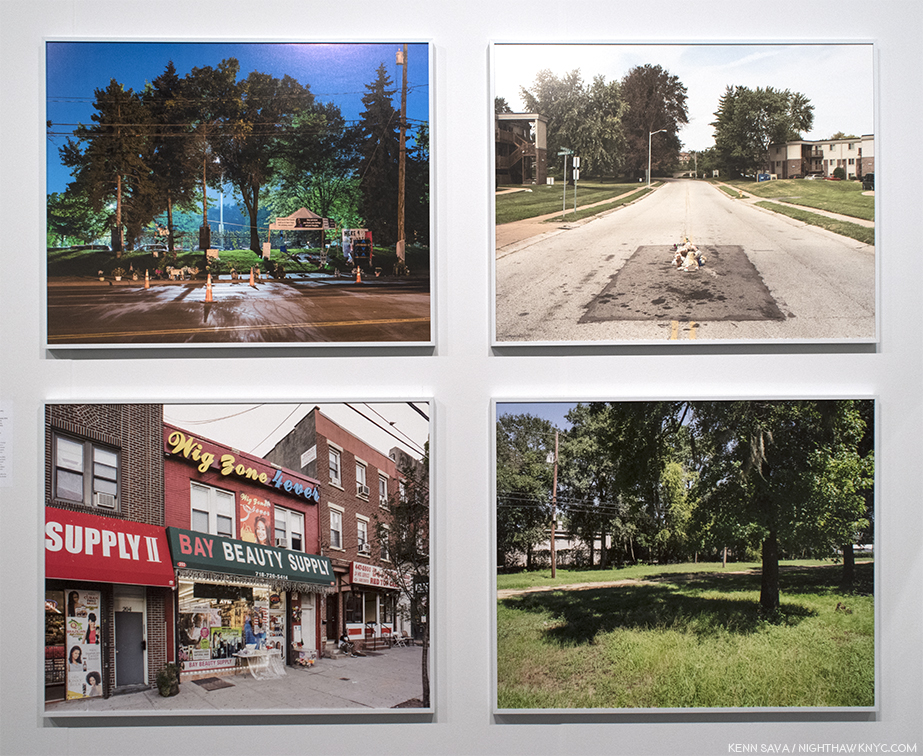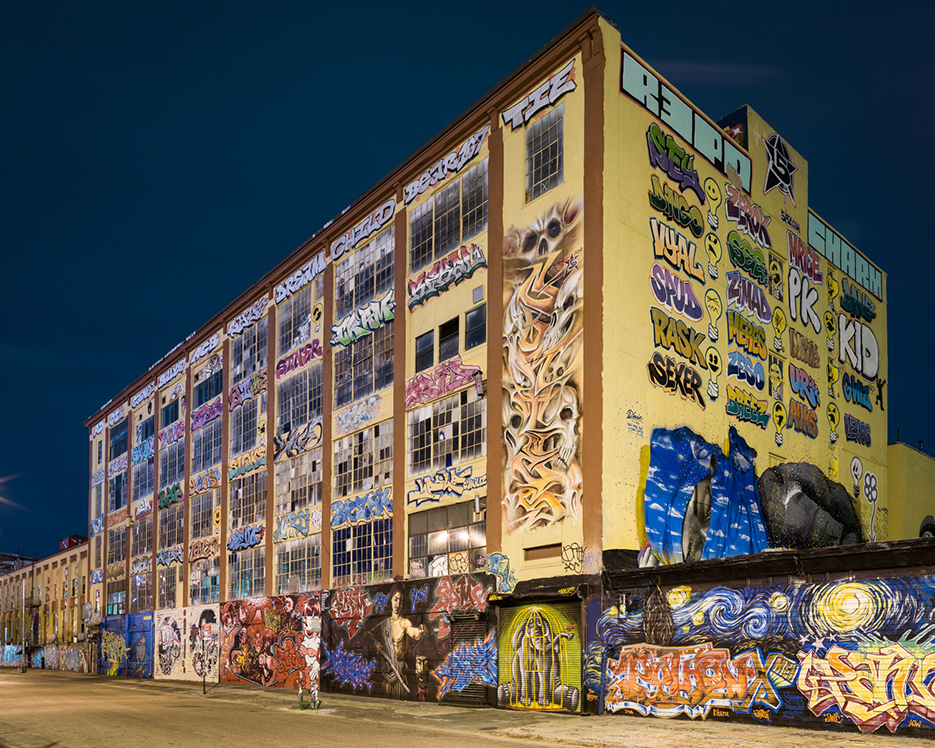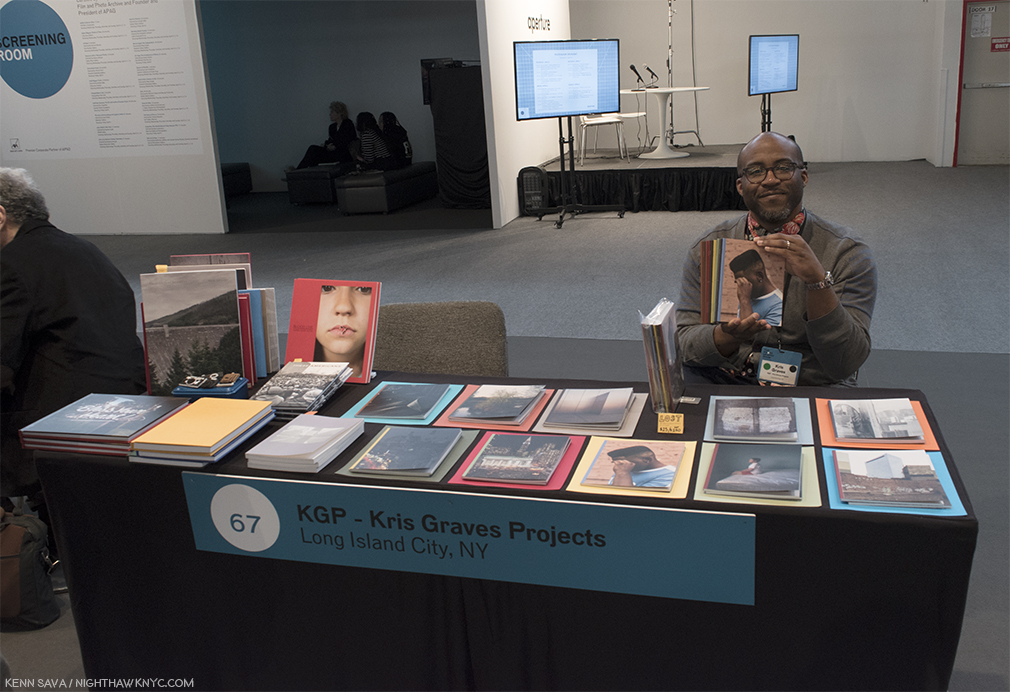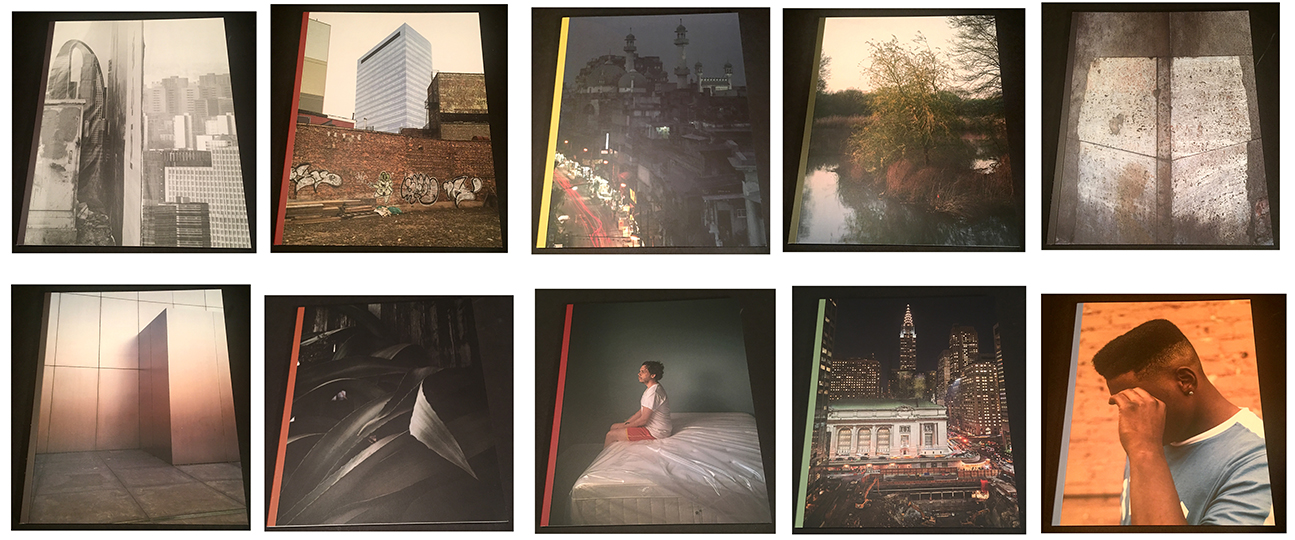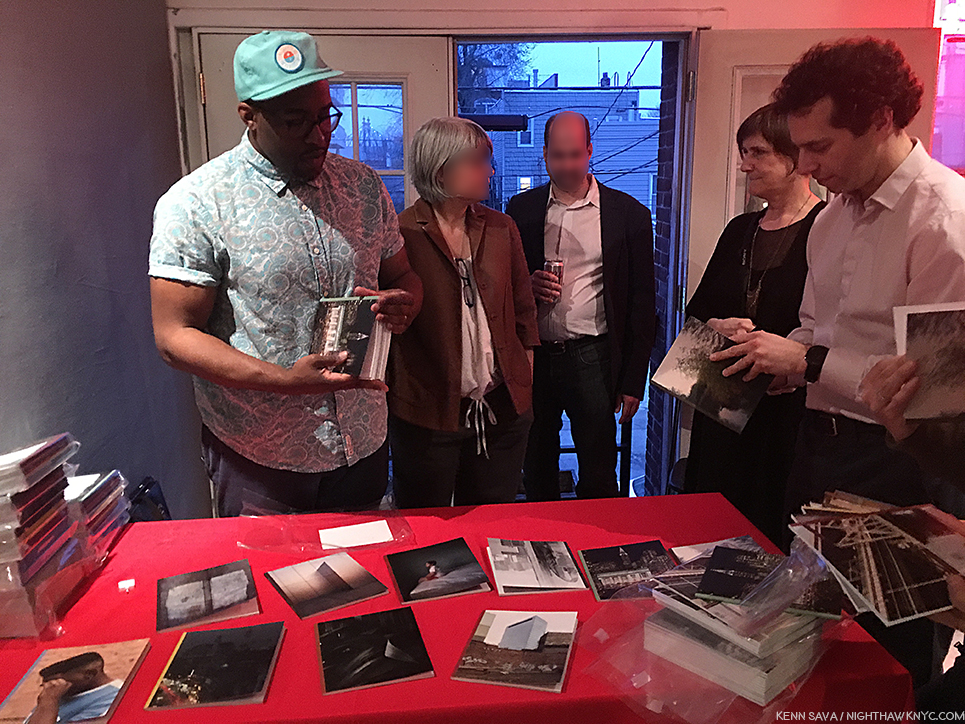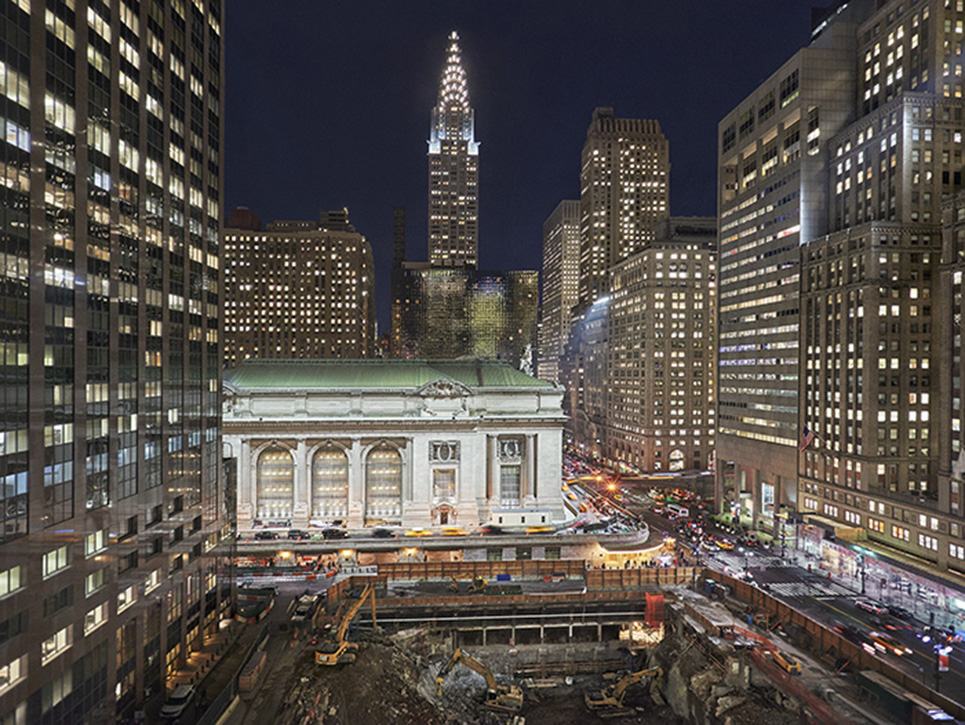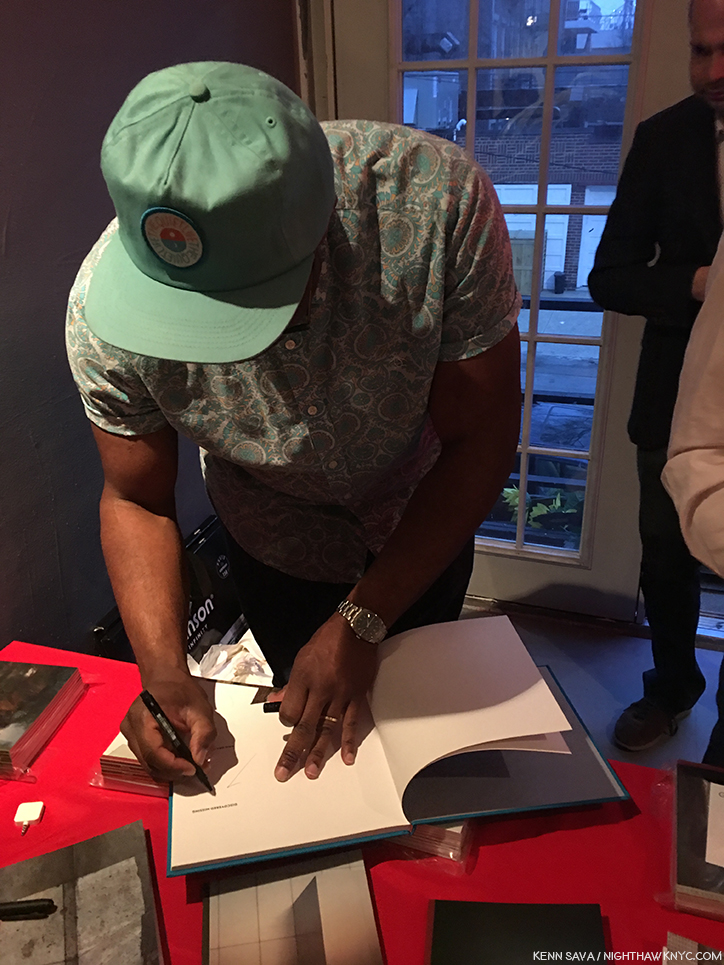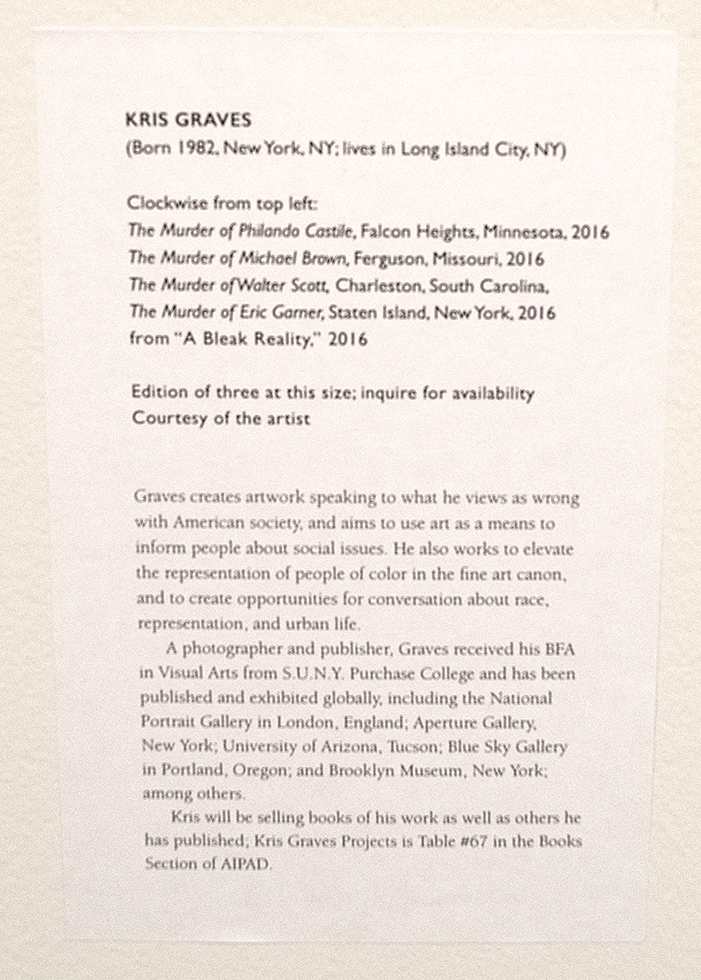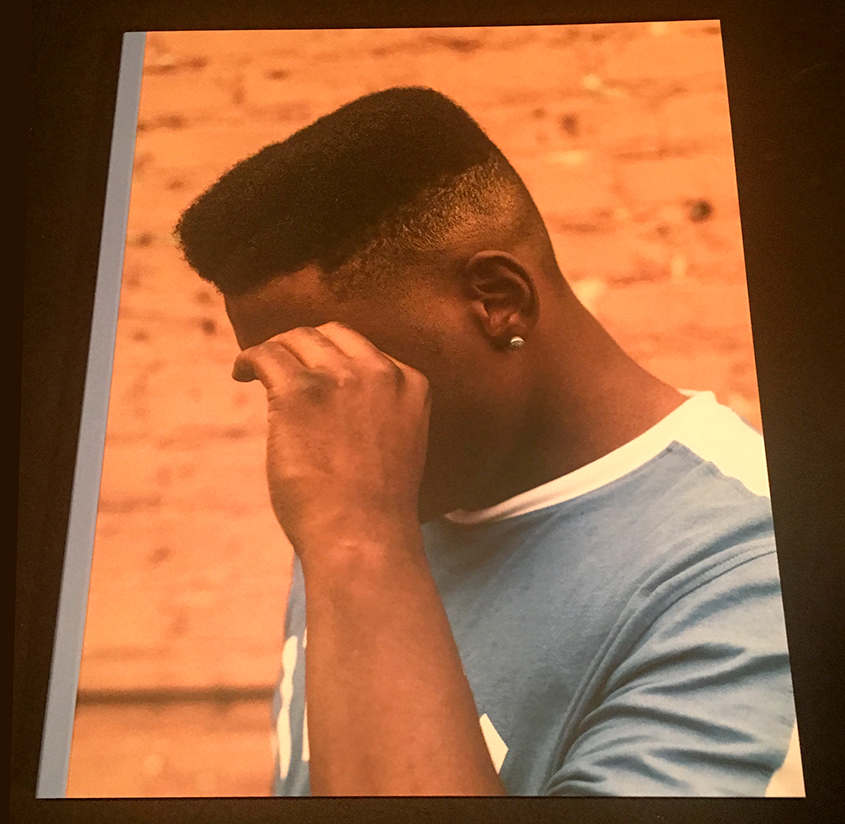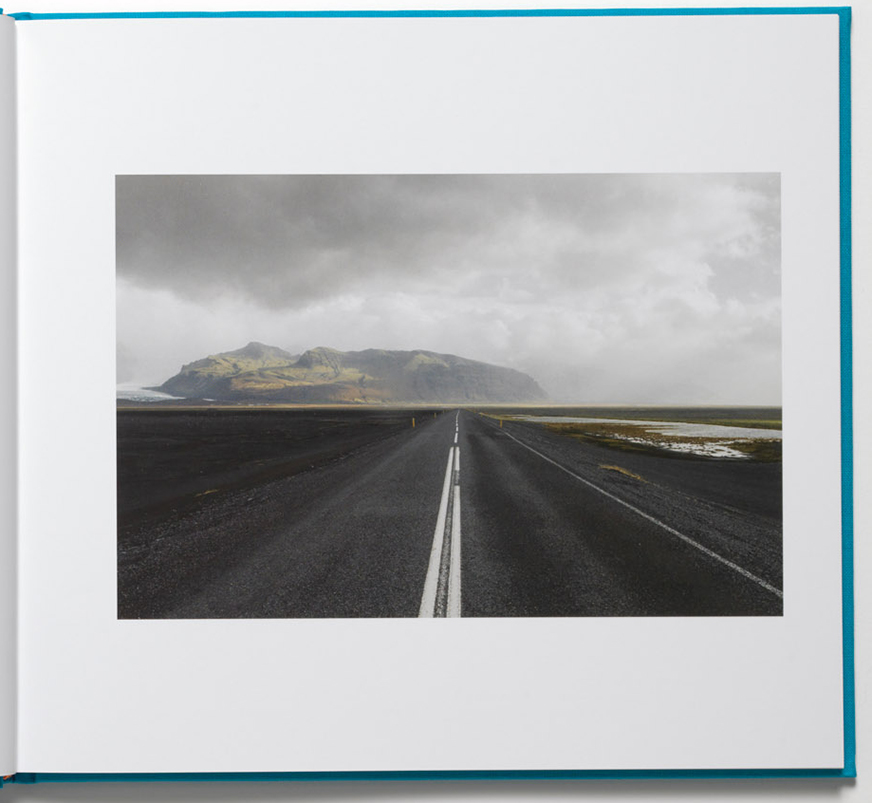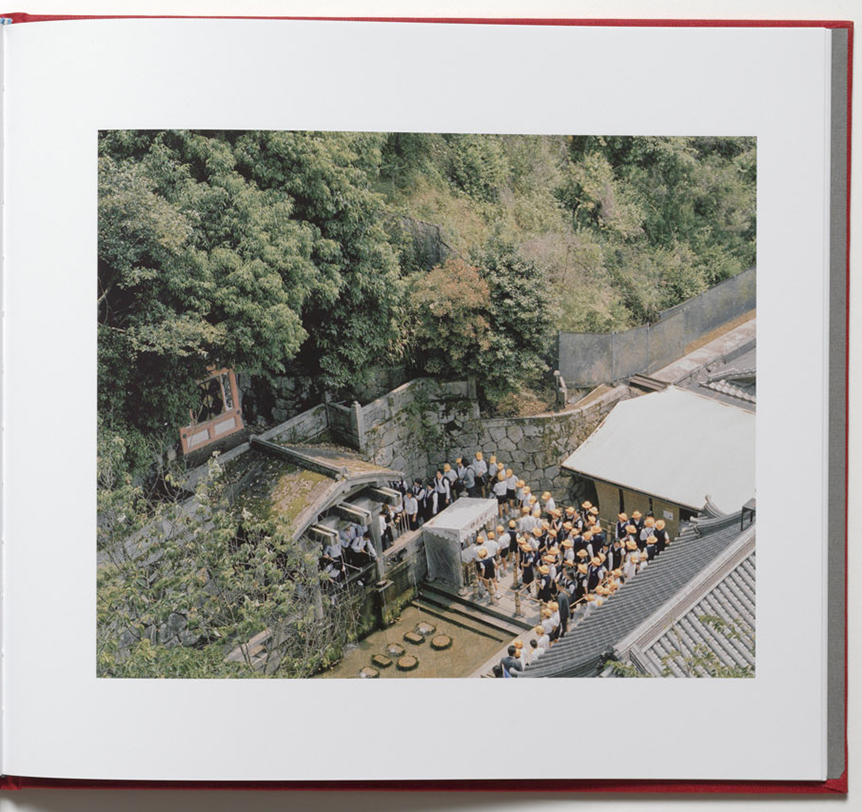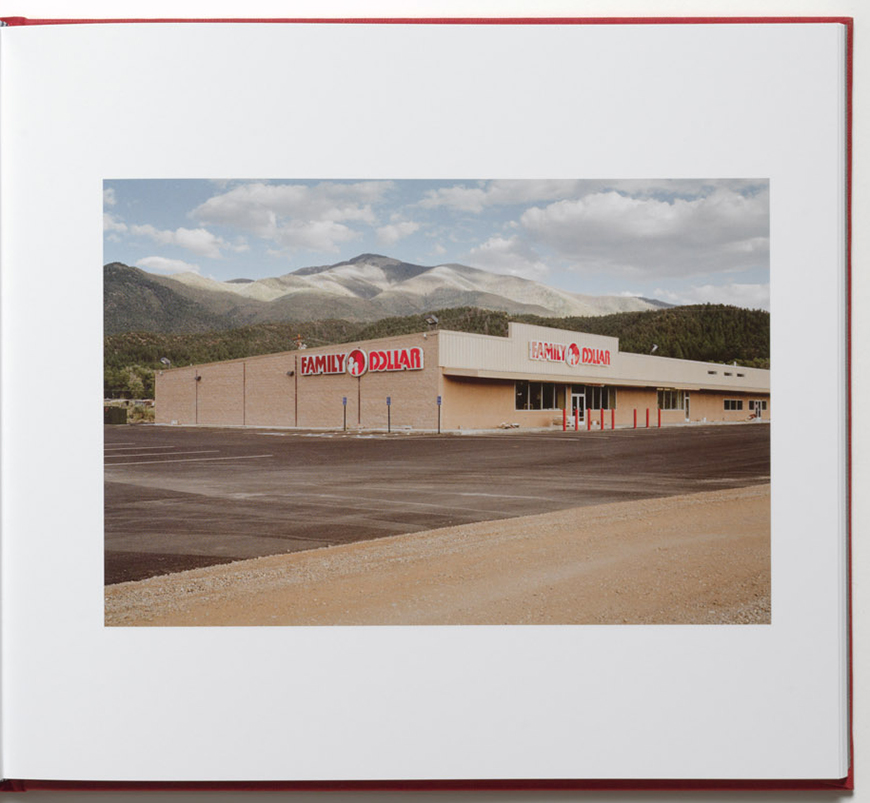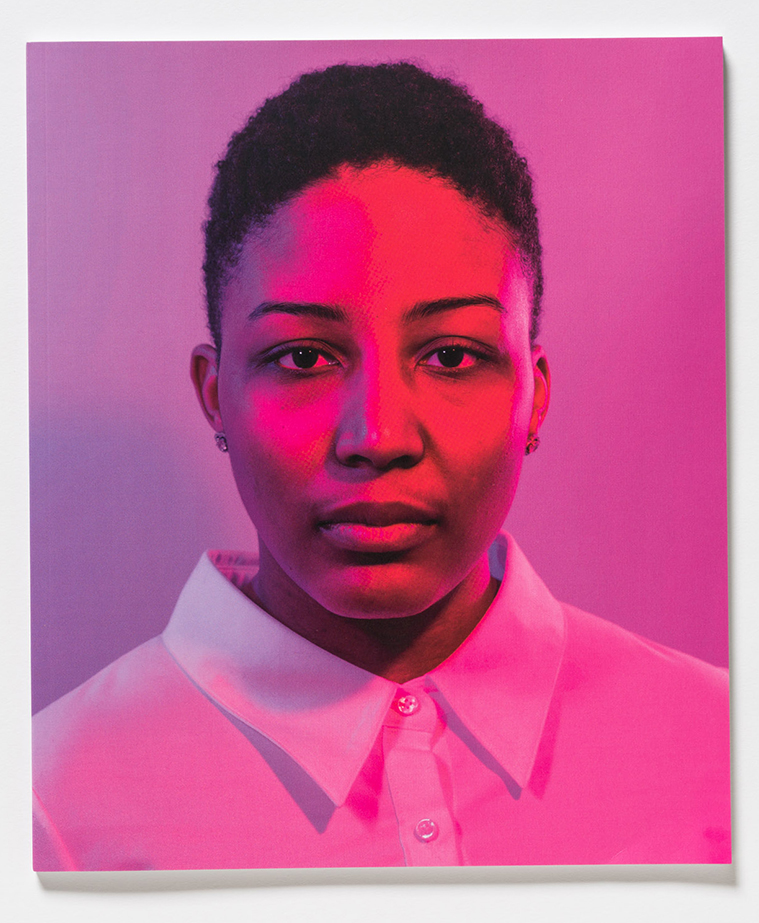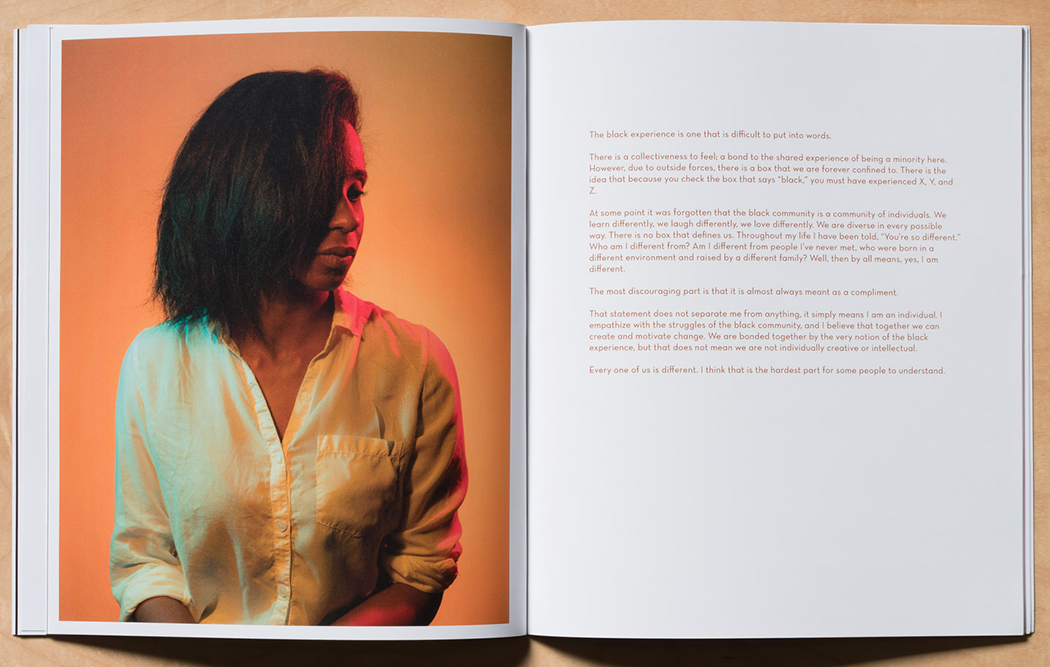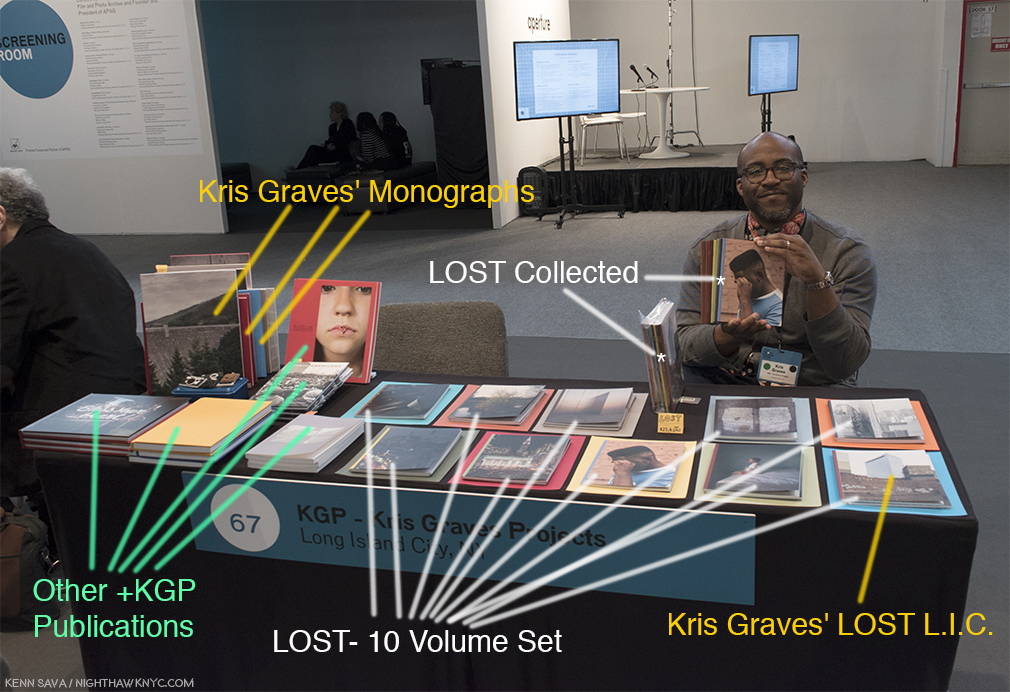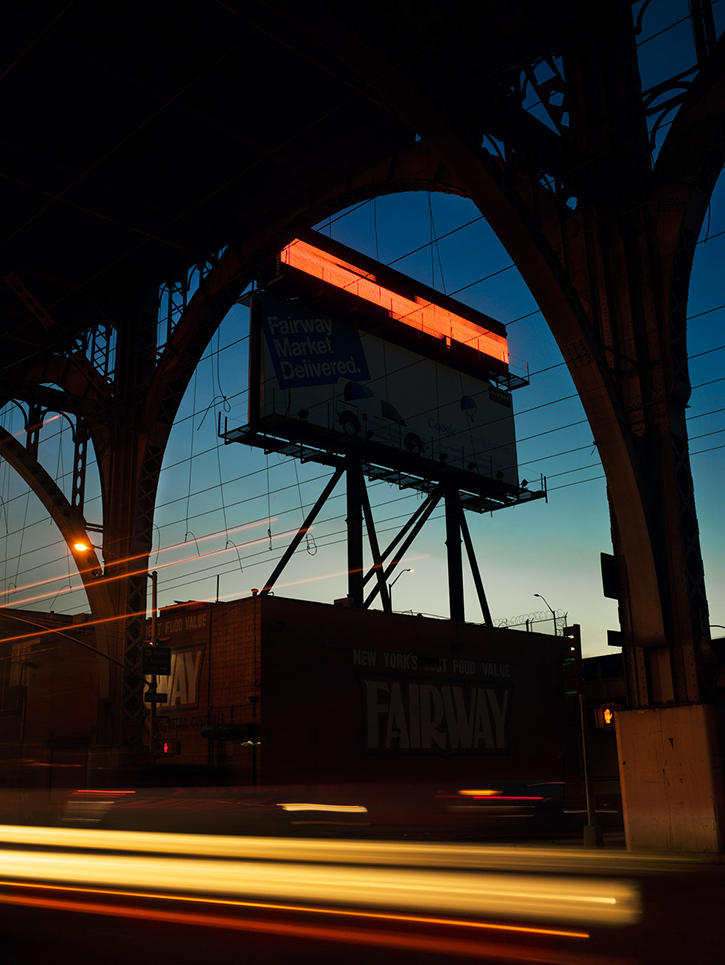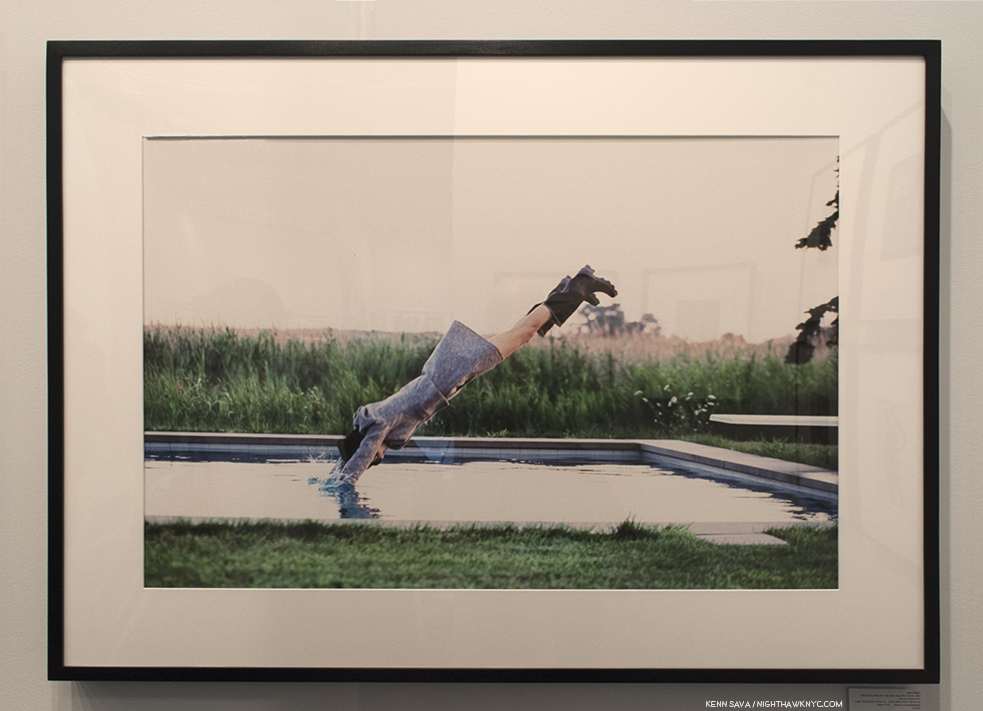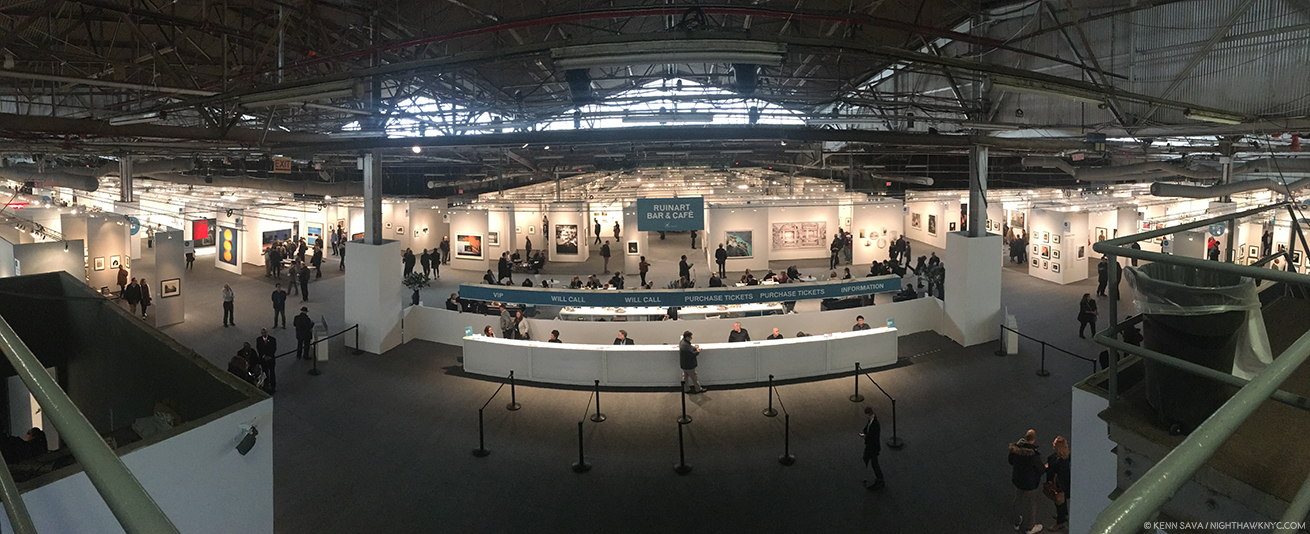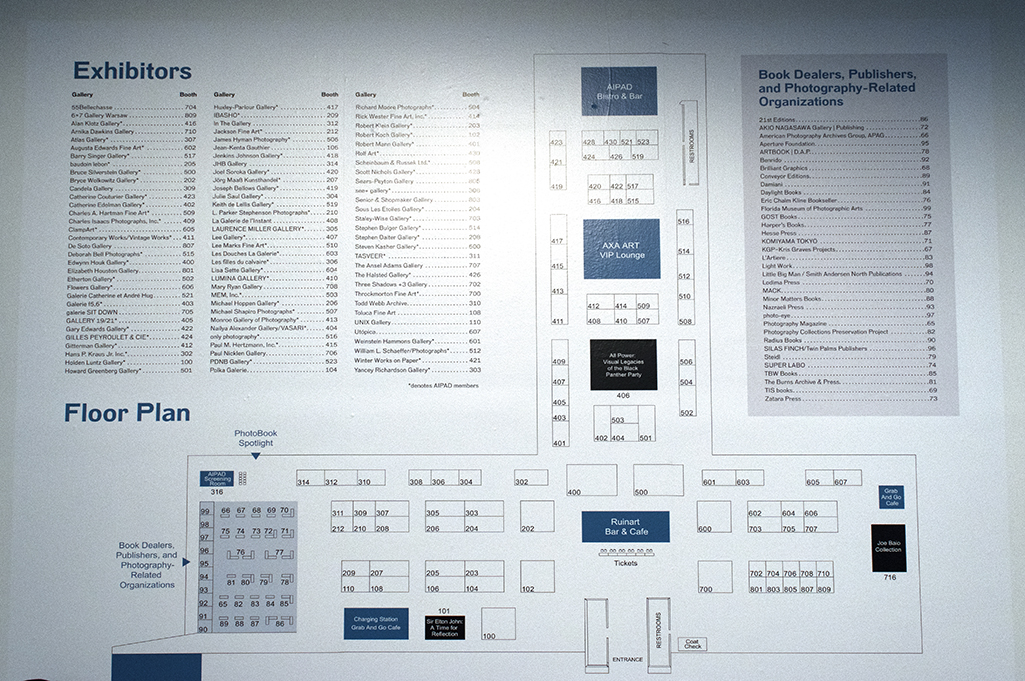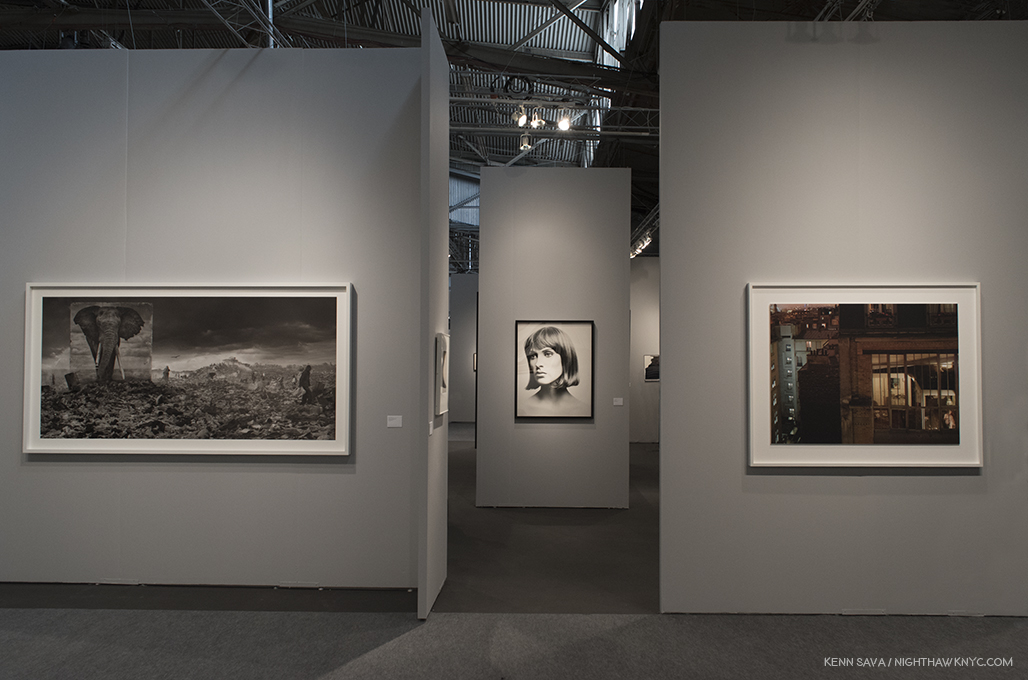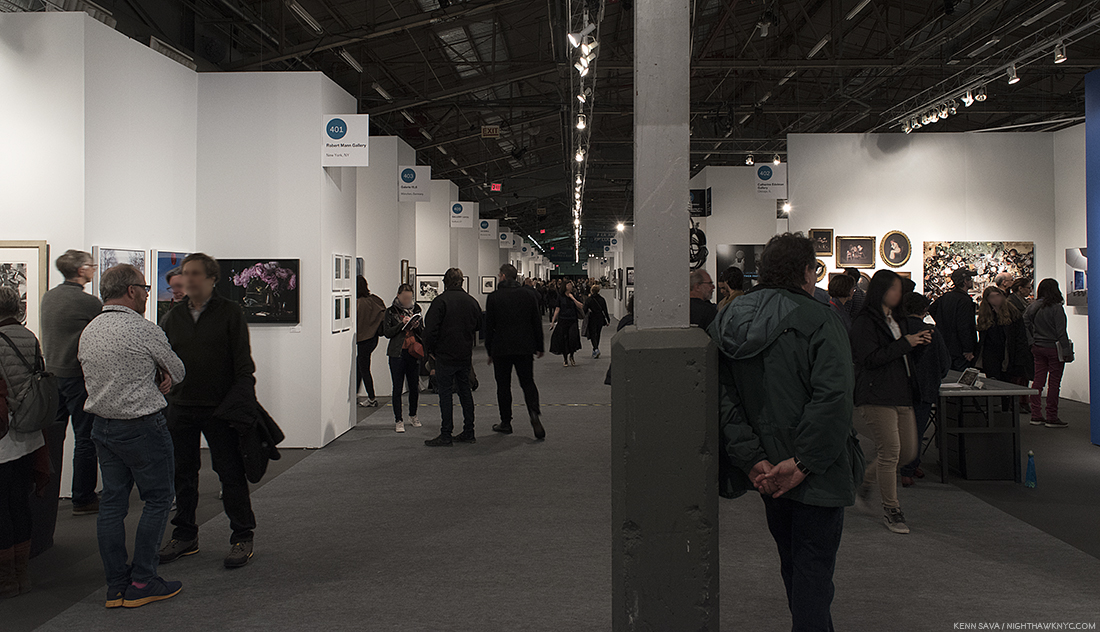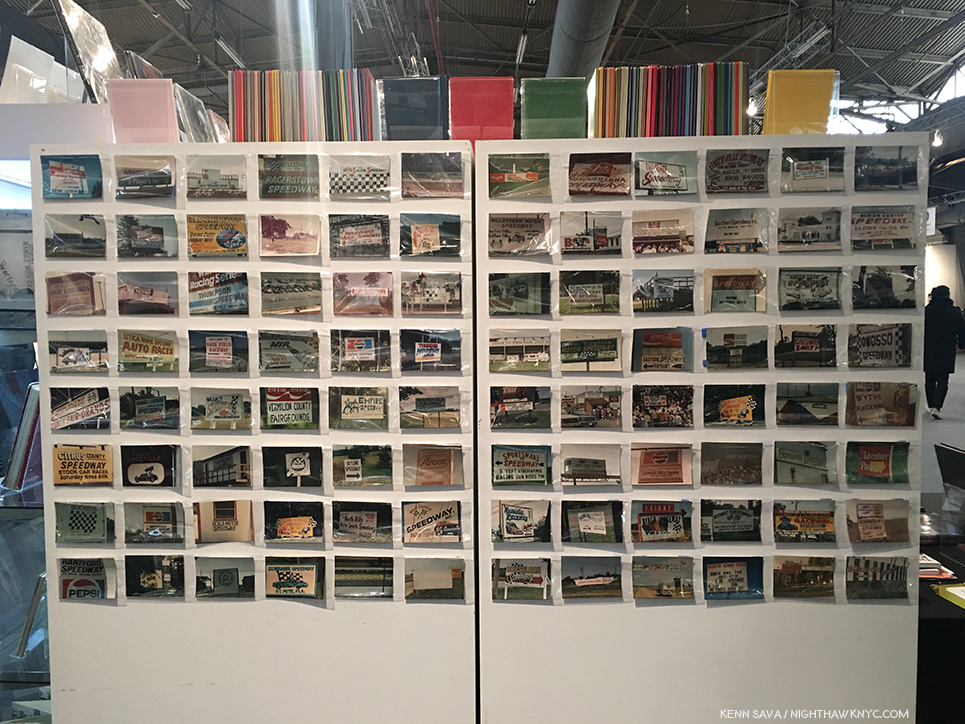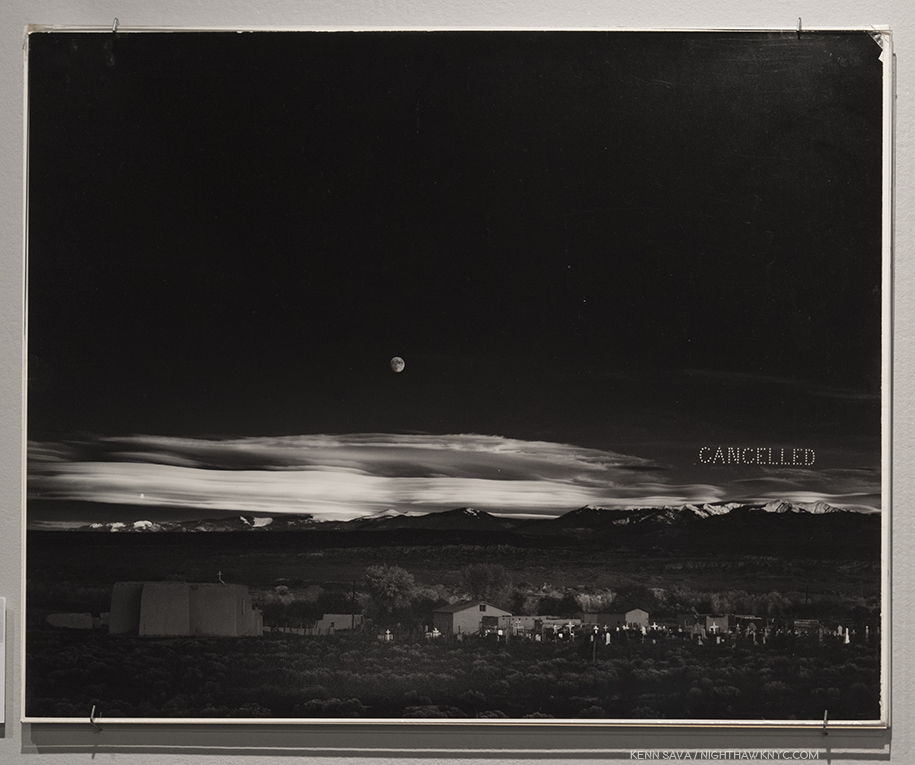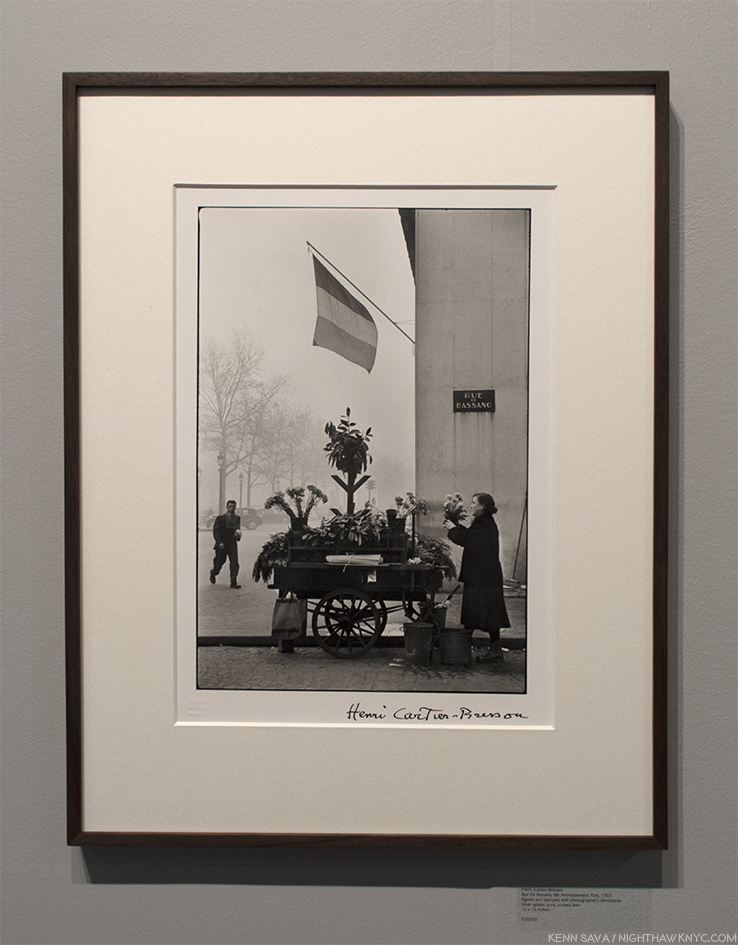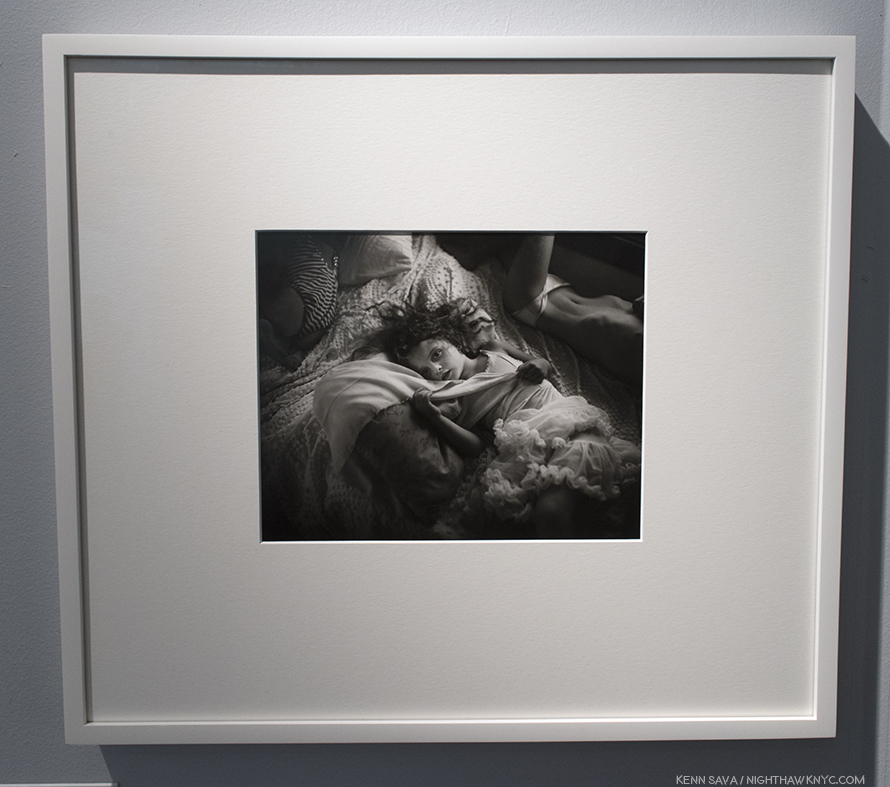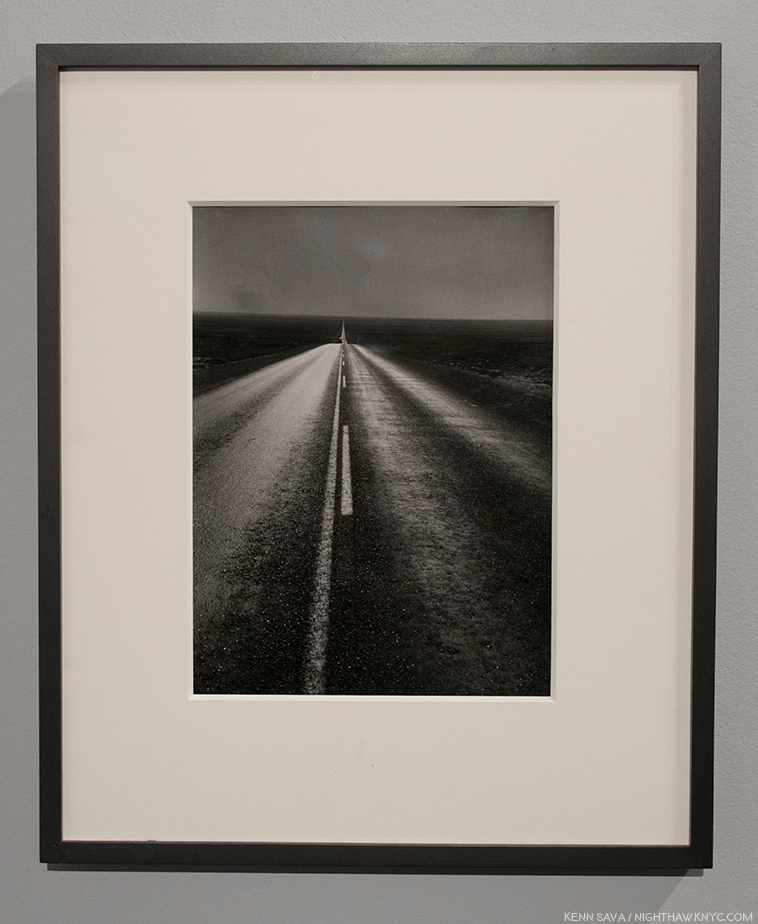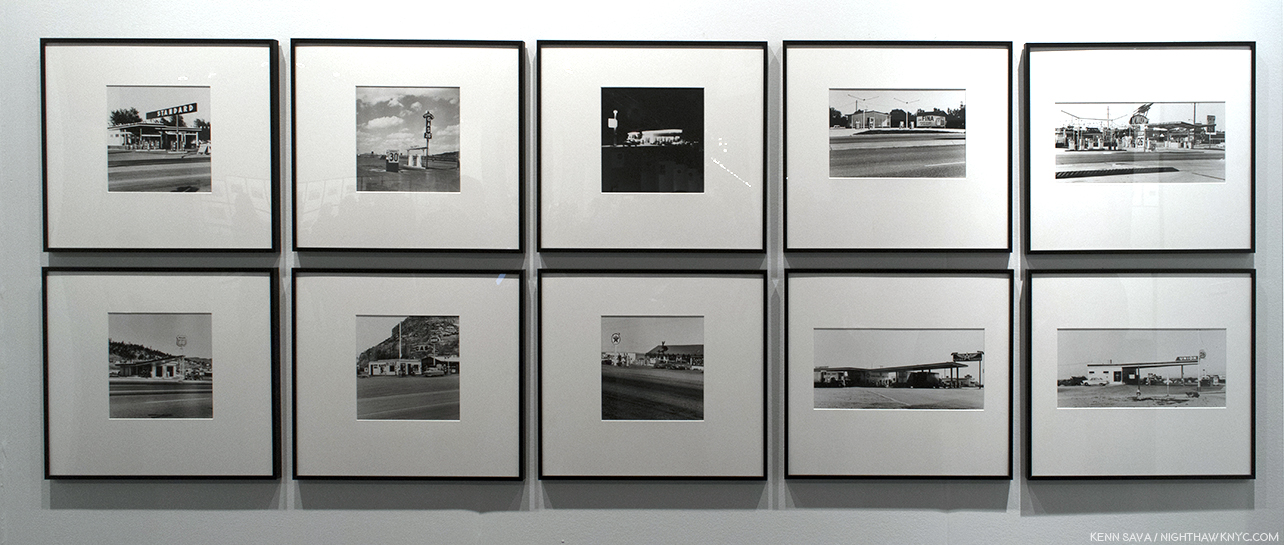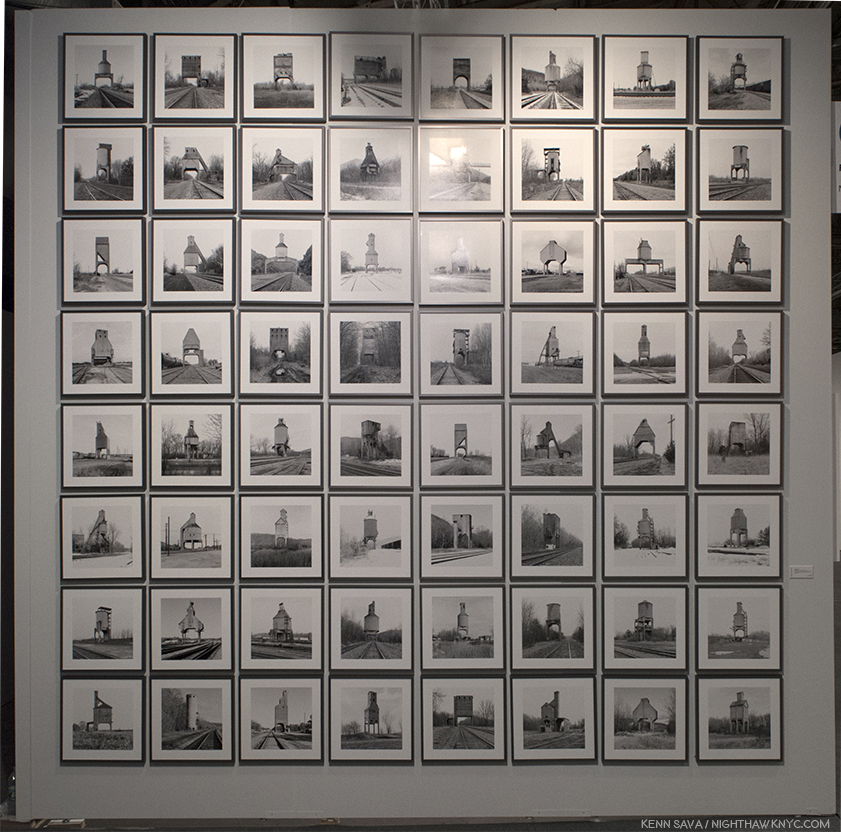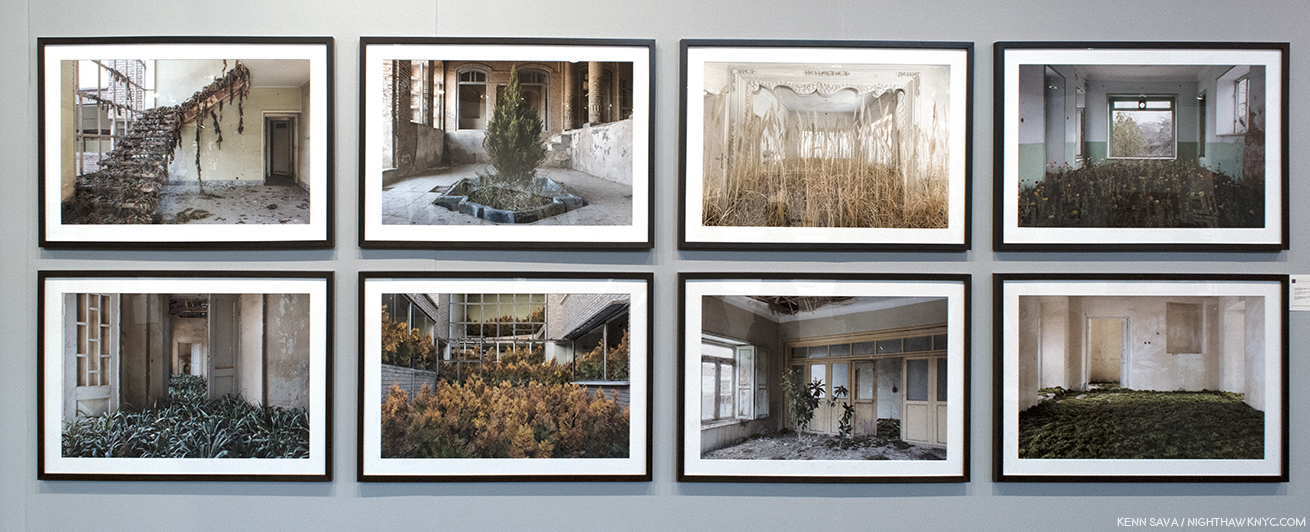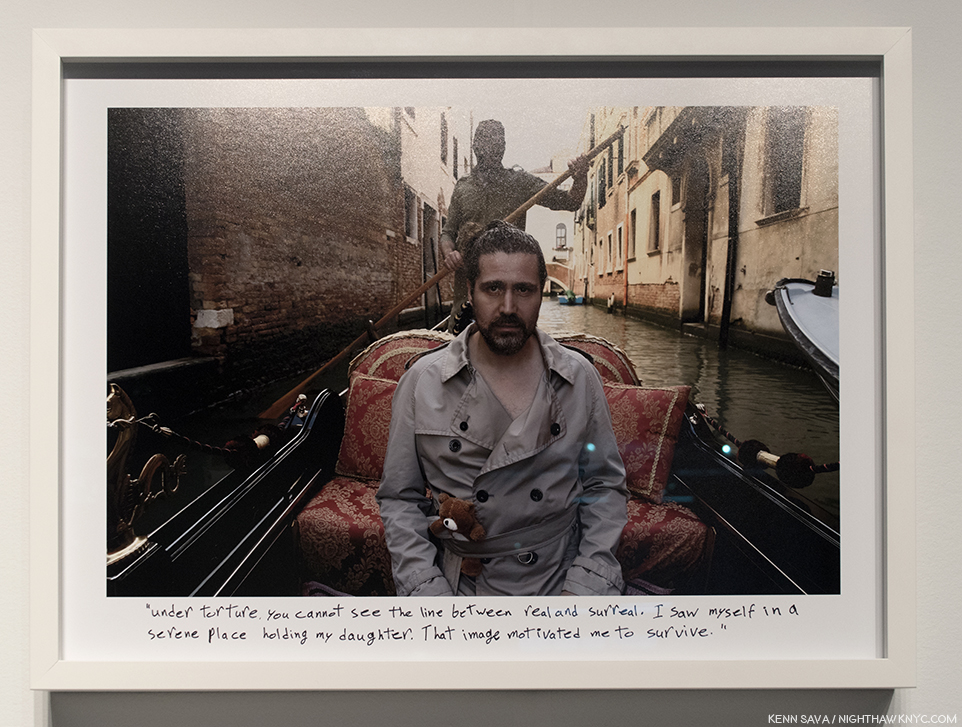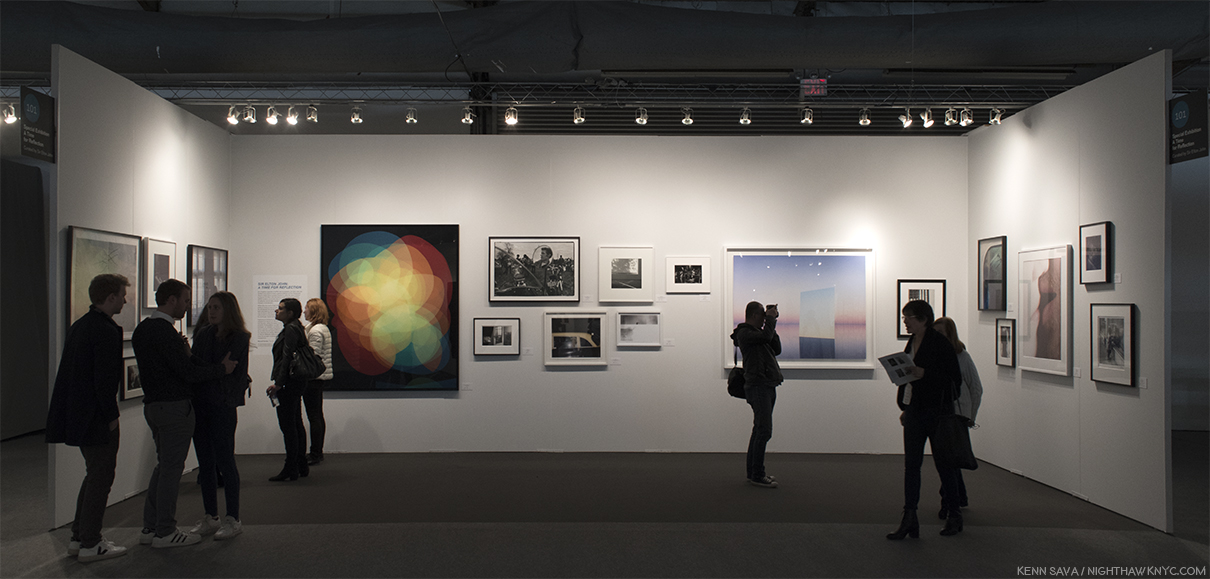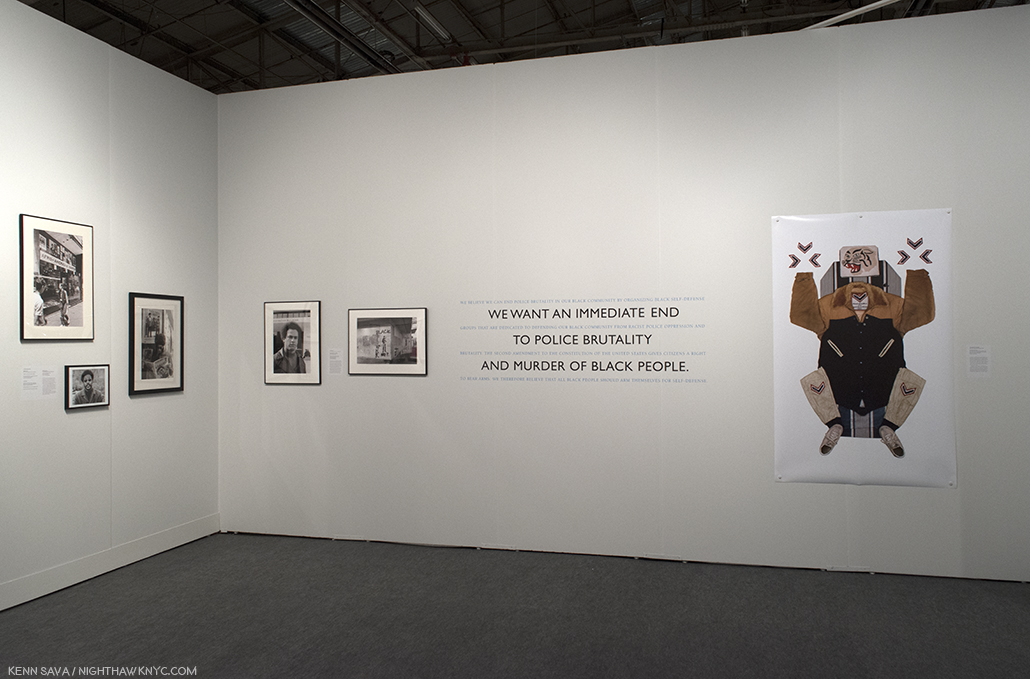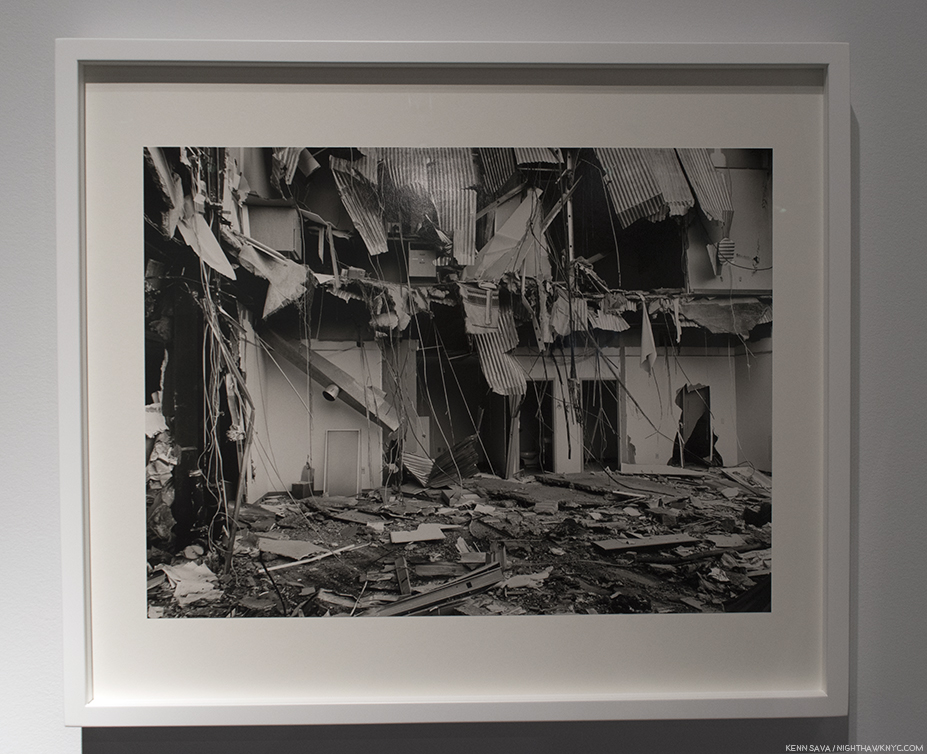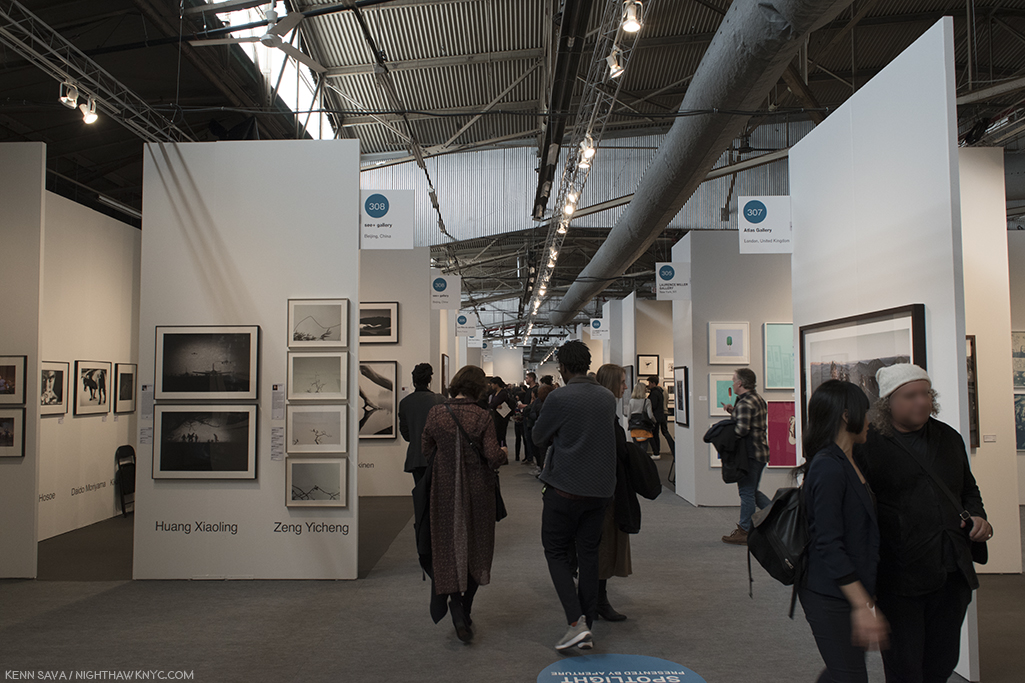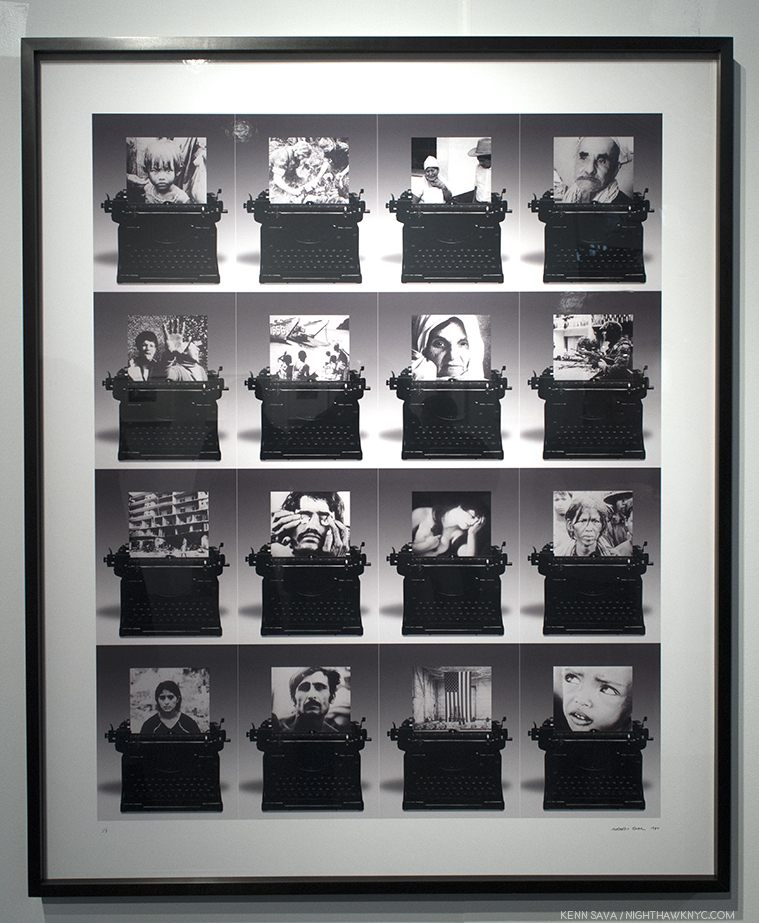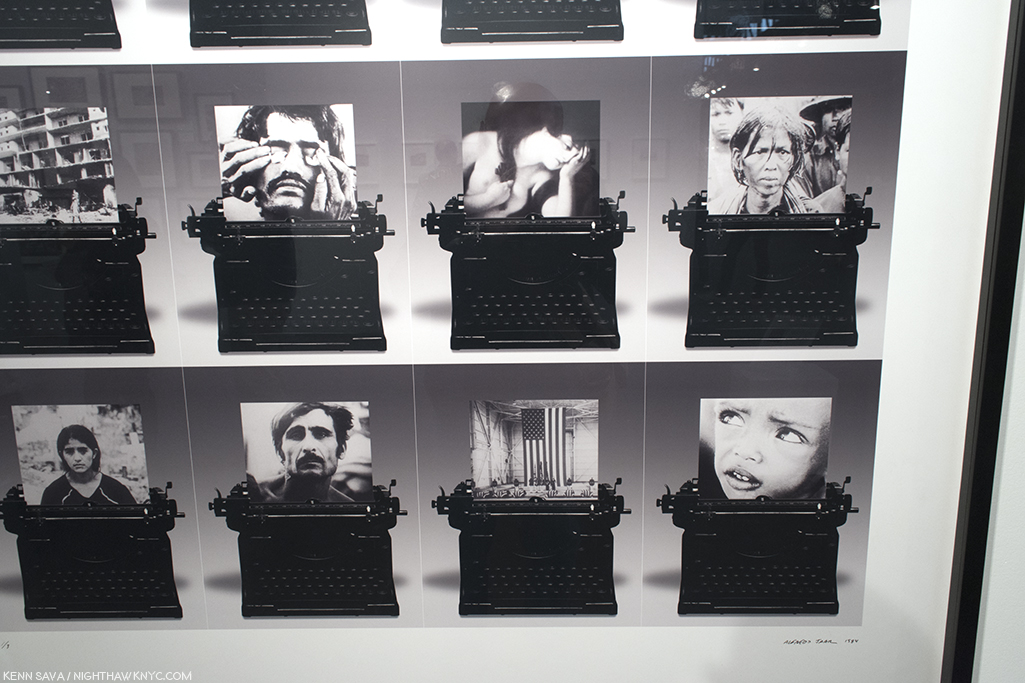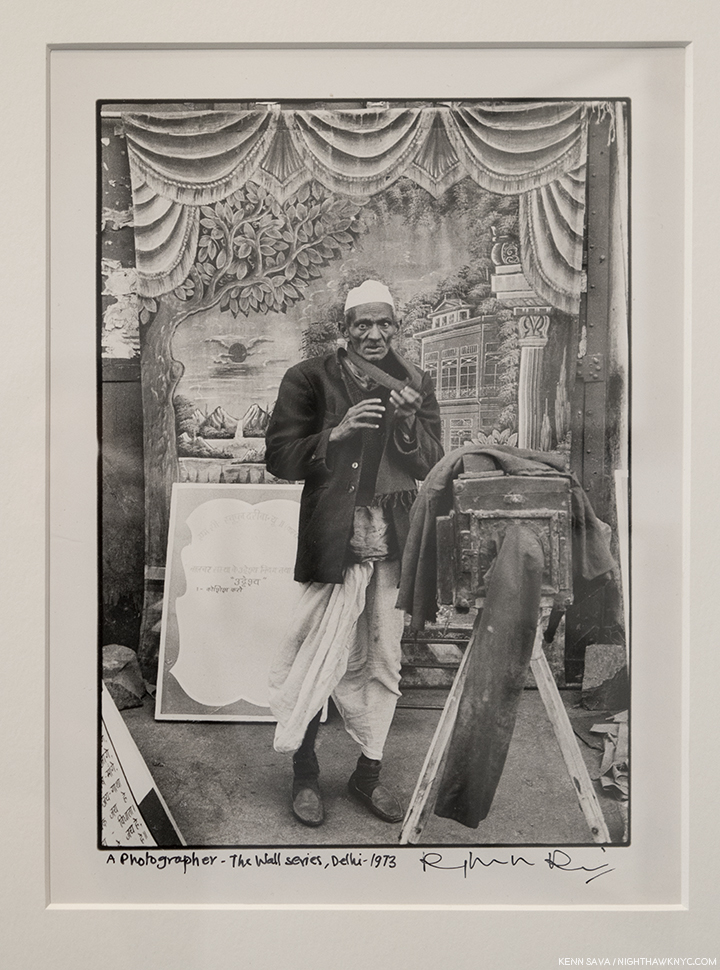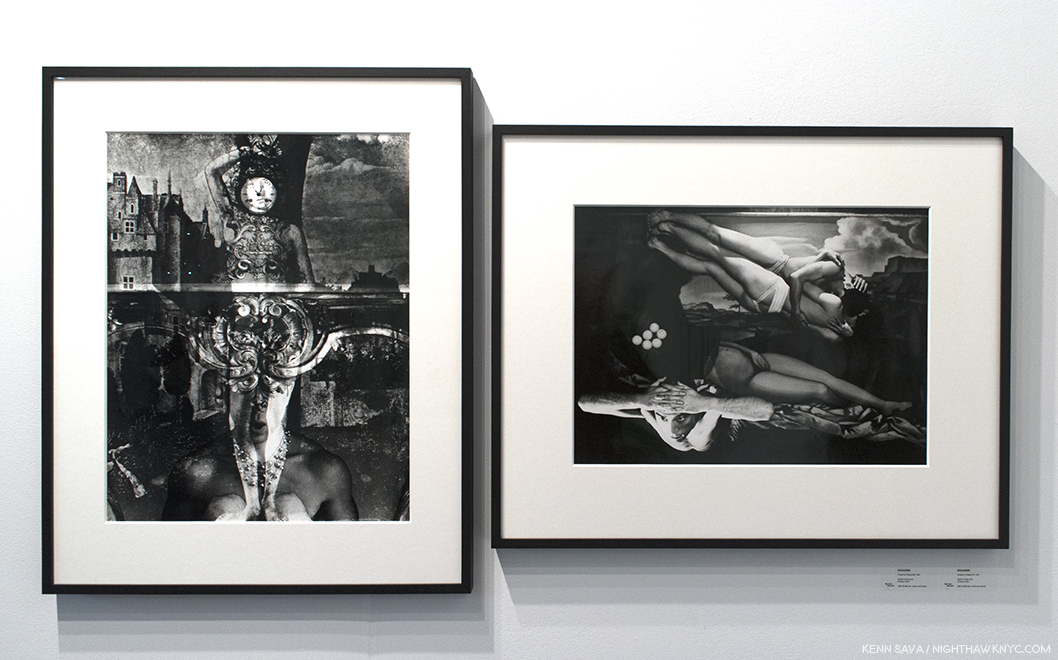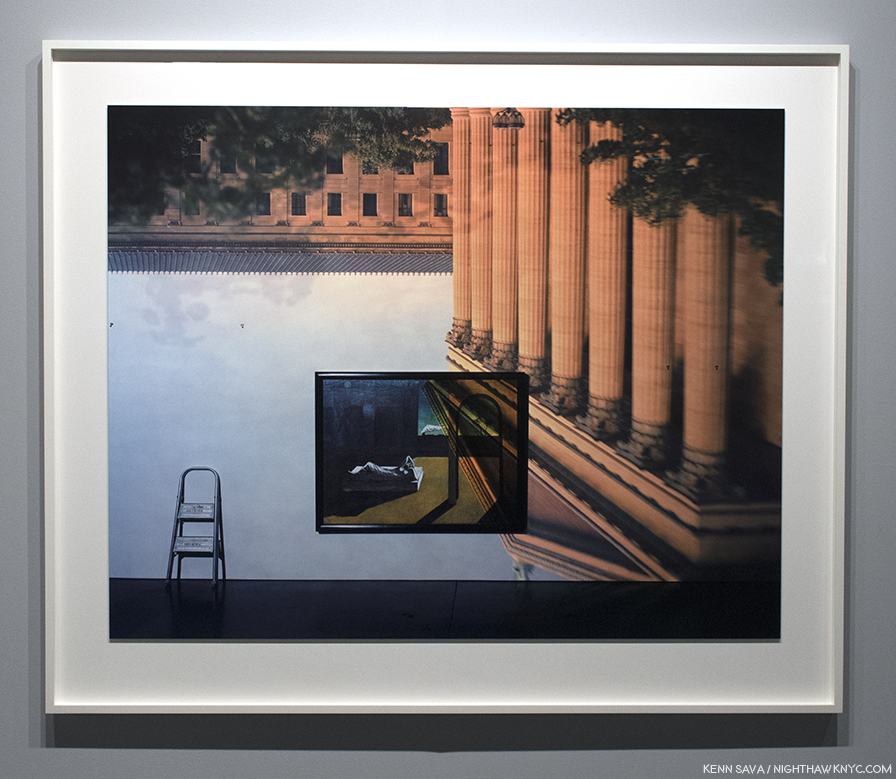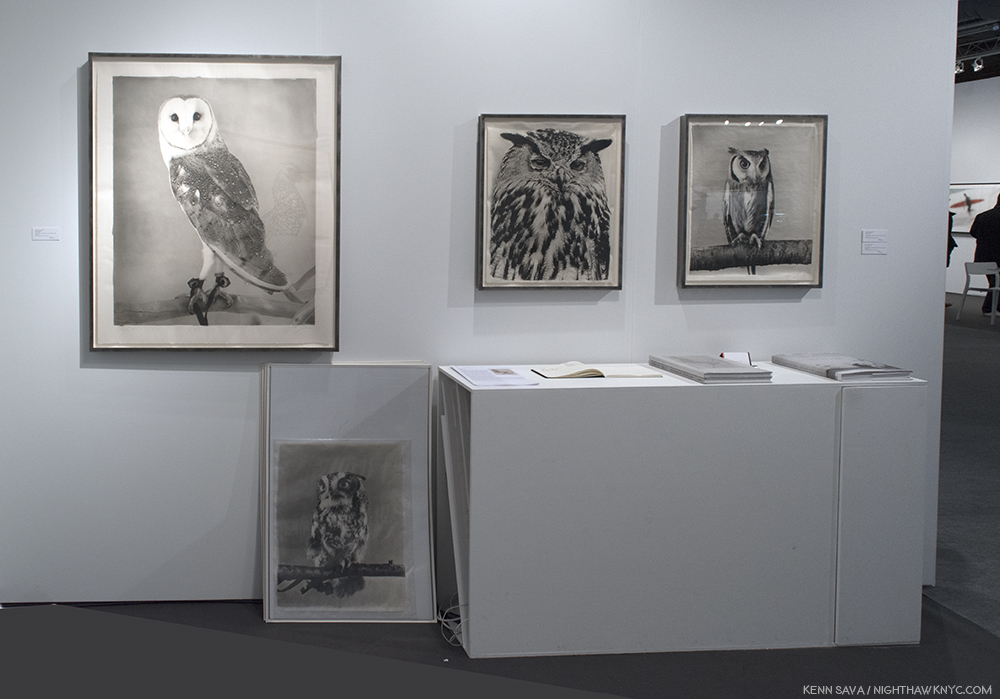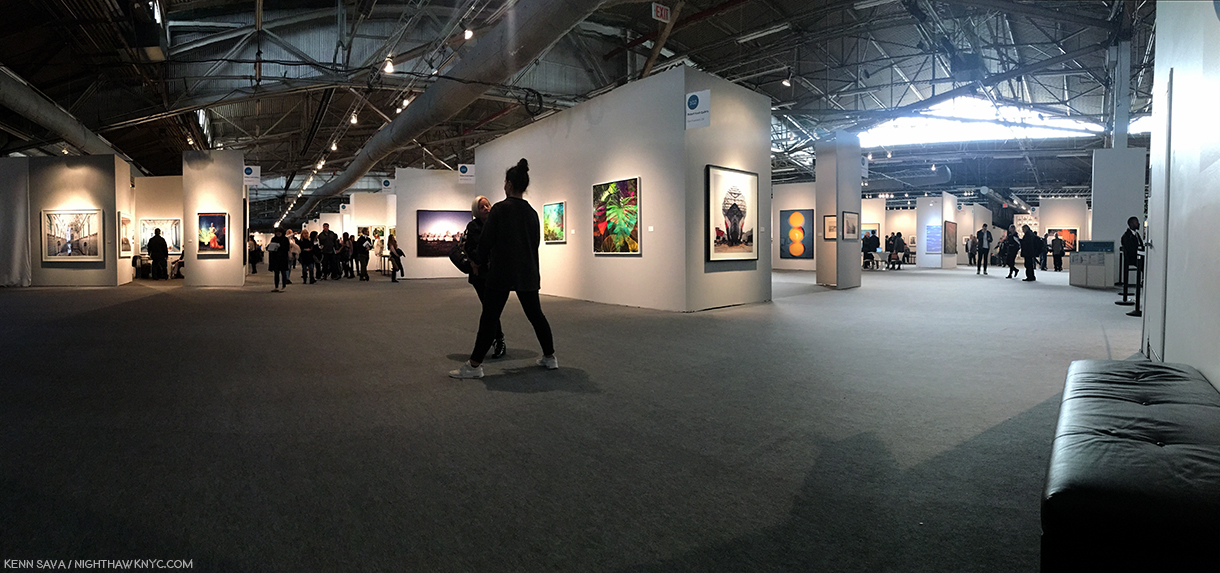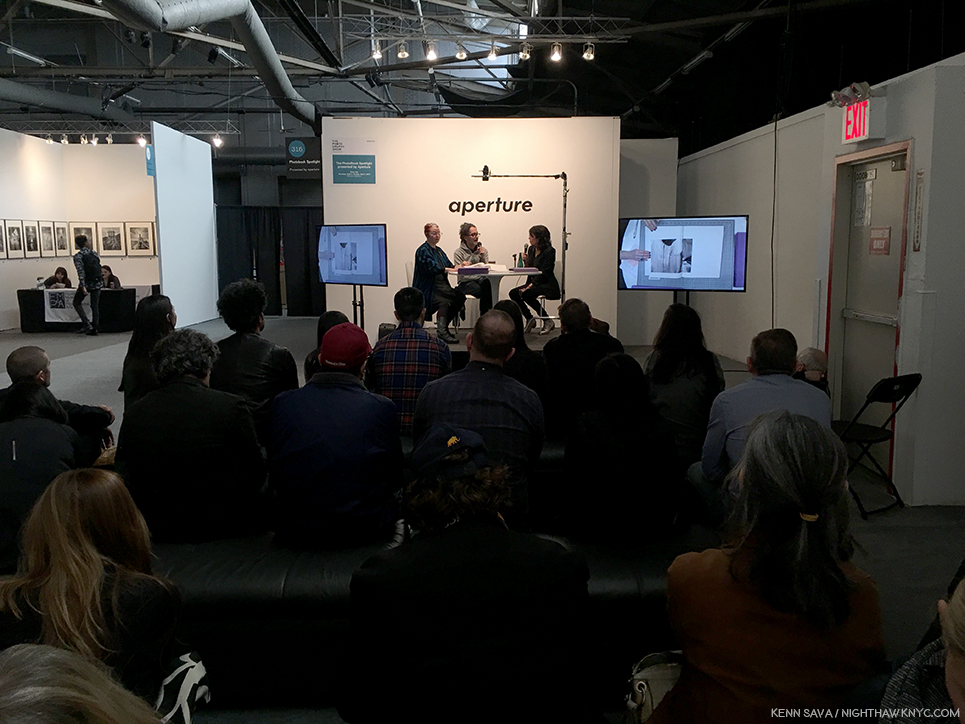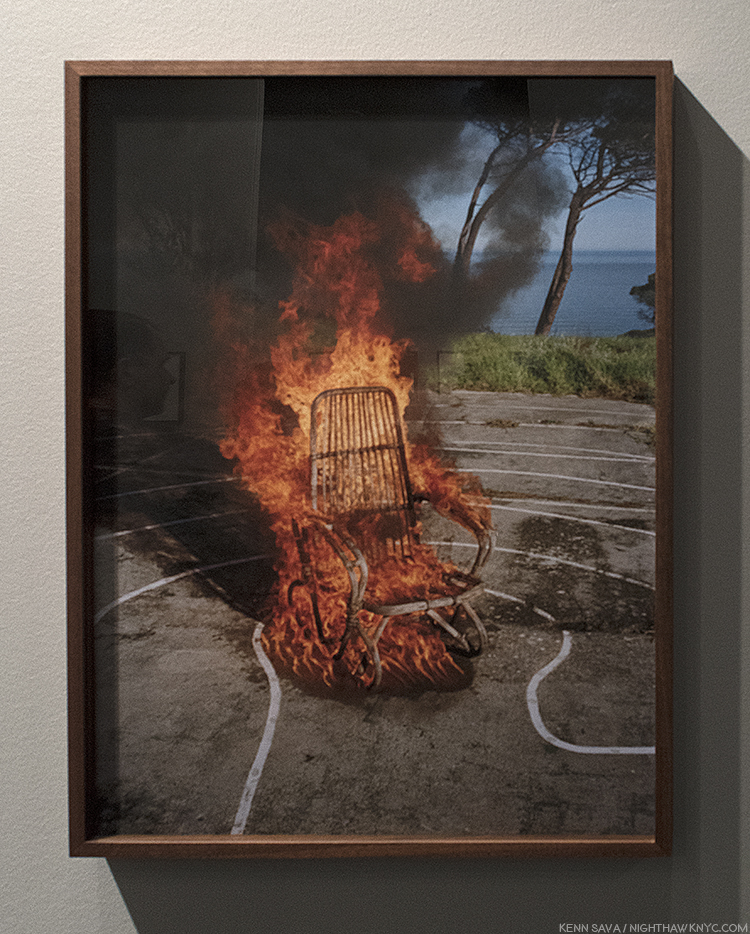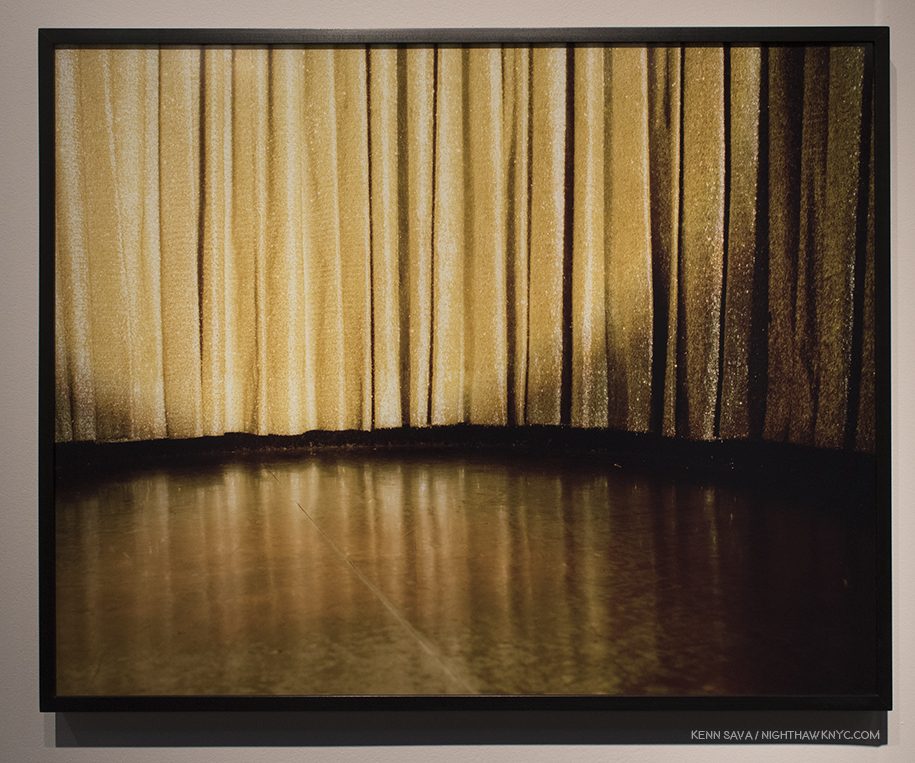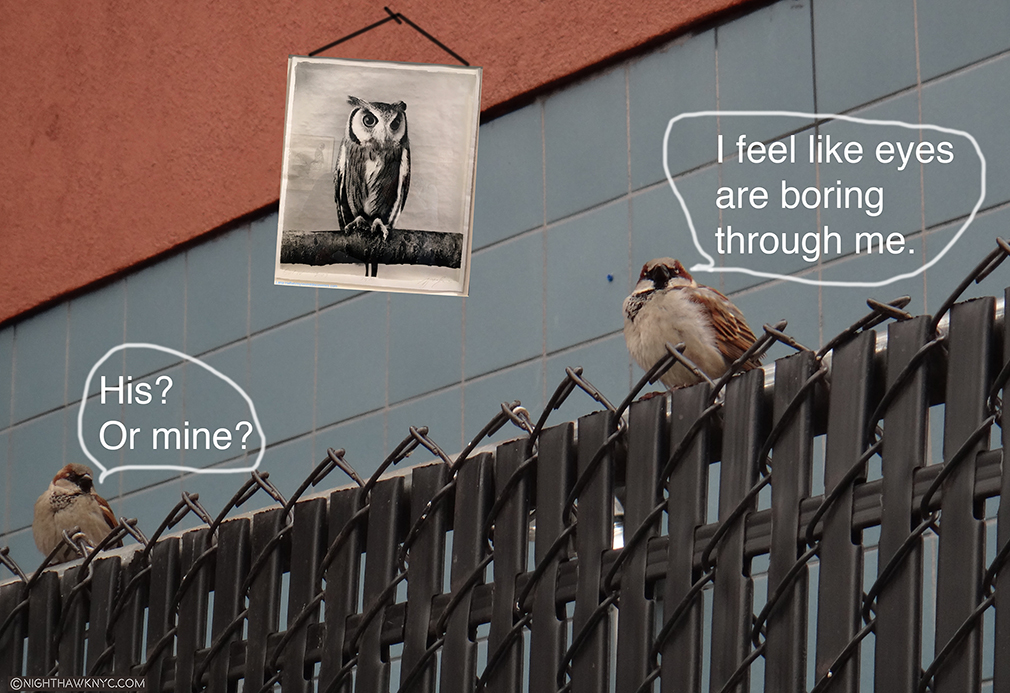If ever there was a series of Photographs that could be termed “monumental,” Jeanine Michna-Bales’ “Through Darkness to Light: Photographs Along the Underground Railroad,” 2002-16, is one in my view. Fourteen years in the making, ten of those spent doing research into the Underground Railroad, (a field that due to the life and death nature of it for all involved, very little is known about even 150 some years later)..Three years scouting locations and taking Photographs. It’s only fitting the resulting project is now a touring exhibition from the Mid-America Arts Alliance that’s currently scheduled to run through 2024! Viewers, including yours truly, who saw some of these works on view at The Photography Show (AIPAD), earlier this year, were captivated by them. I recently called the Artist one of my two AIPAD “Discoveries,” and heard from any number of other show attendees who concurred.
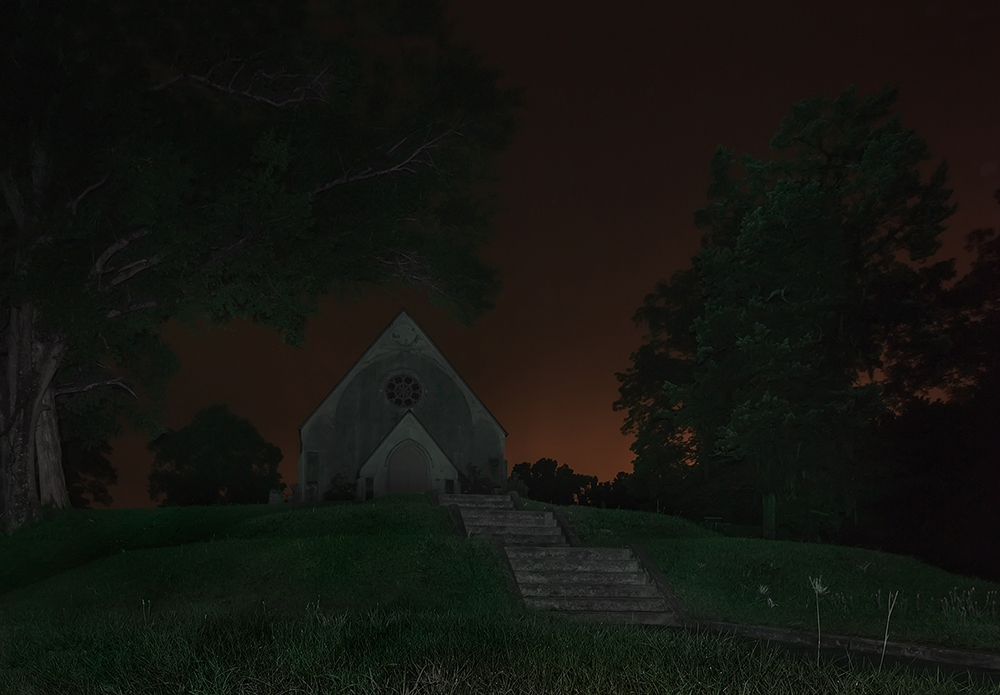
“Resting Place. Church Hill, Mississippi, 2015” Photo courtesy of Jeanine Michna-Bales. Click any image for full size.
Given how much there is to say about this 14 year project, I felt my initial look at it at AIPAD only scratched the surface. After the auspicious beginnings of the traveling exhibition over the past year, and considering how many more viewers will be discovering Jeanine Michna-Bales and “Through Darkness to Light”over the next eight years, I’m sure many will want more information about it and the Artist. Luckily, Jeanine has agreed to do a Q & A, only the second I’ve done here at NighthawkNYC in almost 3 years.
Just back from being invited to speak at the National Gallery of Art, Washington, in conjunction with the Sally Mann Retrospective currently on view there, I asked Jeanine questions about “Through Darkness to Light” I haven’t seen answered anywhere as yet, and I also asked her about the two fascinating projects she started during the intervening fourteen years- “Fallout: A Look Back at the Height of the Cold War in America circa 1960,” 2013-date, and “Frack-tured: Seismic Activity in the Barnett Shale,” 2015-date. Taken as a group, the three projects show a common thread in her work thus far- While the events at the heart of her projects are in the past, many of the actual places lost, remaining evidence scarce, Jeanine Michna-Bales, through years of research, dedication and hard work, manages to recreate in her work convincing, and often beautiful, works that put the viewer in those places and times. Why? Perhaps she’ll tell us below. For my part, I’m reminded of what George Santayana famously said, “Those who cannot remember the past are condemned to repeat it.”
Jeanine, who is represented by PDNB Gallery, Dallas, and Arnika Dawkins Gallery in Atlanta, also kindly supplied Photos to go along with a few I took at AIPAD, and this one-
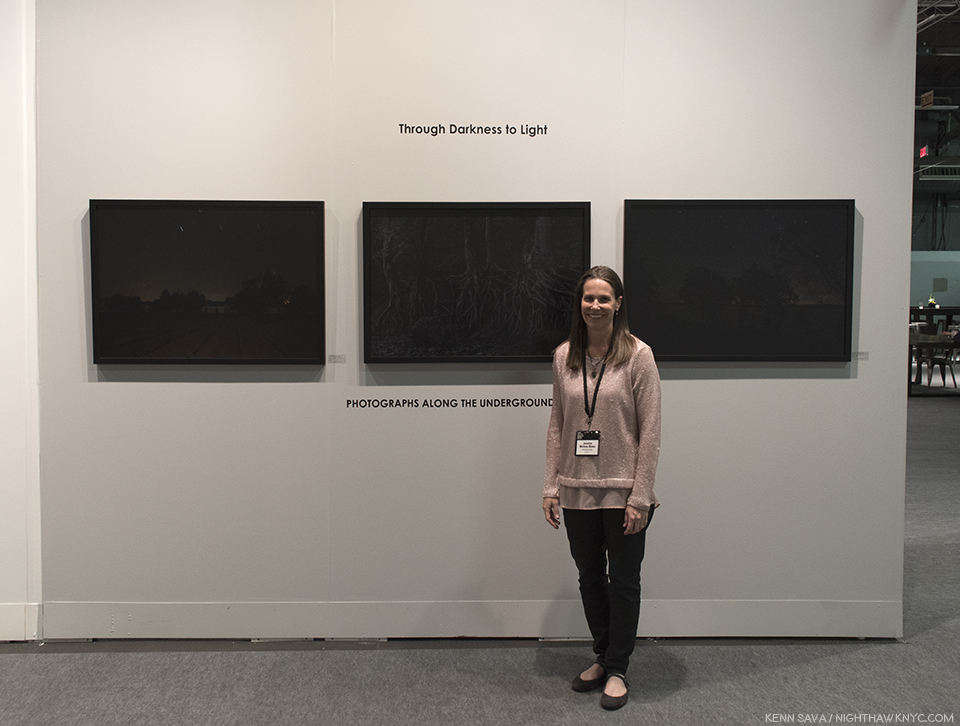
Jeanine Michna-Bales in front of some of the fruits of over a decade’s work, the extraordinary night Photography of “Through Darkness to Light,” at AIPAD, April 7, 2018.
Kenn Sava (KS)- Let’s start at the start. Where did the idea for “Through Darkness To Light: Photographs Along the Underground Railroad” come from?
Jeanine Michna-Bales (JMB)- Part of my practice as an artist is to write 3 pages long hand each day. Or try to anyway. Sometimes trying to balance my time between my family and career gets difficult. Most days I do manage to write ‘my pages’.
I am usually exploring why I am interested in a particular topic, flushing out an artist statement, looking at a topic from different viewpoints, etc. What is it that resonates with me? What information from that topic is applicable to today?
I also enjoy taking walks to help clear my mind. Always have. I had just finished a project documenting the locations where I had taken these walks. So, I already had the thought in my mind of what walking looks like.
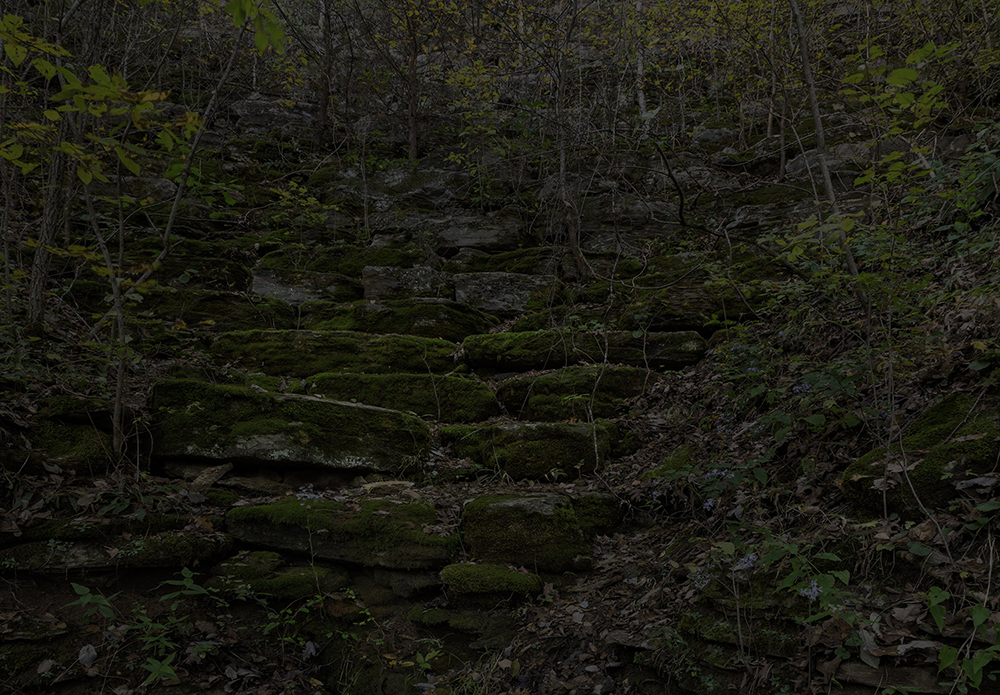
“Devil’s Backbone. Lewis County, Tennessee, 2014” Photo courtesy of Jeanine Michna-Bales.
Growing up in Indiana, the Underground Railroad was part of our curriculum in grade school. I remember being fascinated with the topic and trying to comprehend that someone would have to go through this journey in order to be free.
I like to think that “Through Darkness to Light” chose me. In 2002, the idea just showed up on the pages one day and wouldn’t let go of me. I kept coming back to the thought of what a journey out of slavery would look like. I spent years trying to research locations. I started before the U.S. Congress Freedom Trail Initiatives, where they were funding research to identify locations and narratives. Also, prior to the National Freedom Center in Cincinnati. So, there wasn’t a whole lot of information out there. I would research and get nowhere and then put the idea away and go back to my day job as an advertising agency art director. But, it wouldn’t let me go. I kept coming back to the idea over and over again. Finally, in 2008 or 2009 my step-dad suggested that I visit the Indiana Historical Society library. There was a librarian there who had been interested in the Underground Railroad. Anytime she came across anything that referenced it, she would make a photocopy and notation on how to find it and put it into a clipping file. She had clippings from period newspapers, to historical ones, to recent ones. Thesis papers. Books. And tons of information. I copied everything and brought it home. It took me months to go through and organize. But, it was the catalyst that gave me those first few locations to photograph.
Often, I would not be able to find locations or details. The amount of information I was going through was tremendous. I was searching for narratives in order to add their voices into the project, as well as give me a good idea of what to photograph. But, I would always manage to have the information given to me by someone.
The project won a 2014 CENTER Santa Fe Choice Award and some images from the series were a part of the group exhibition for the award winners. The woman whose work was on display next to mine invited her uncle to the show. He lives in Santa Fe. We ended up talking because he was intrigued by the images from “Through Darkness to Light.” I had been looking for a missing link in the path through Indiana for several years. As we got to talking, it turns out that he is the ancestor of abolitionist William Beard whose house I had been searching for. He was able to look up the address for me and send it to me.
Another time, I was out photographing around midnight in the Georgetown District of Madison, Indiana. The district was home to George DeBaptiste and other conductors on the Underground Railroad (UGRR). A woman came out of her house to walk her dog. She wanted to know what I was doing and I explained it to her. She was in the process of trying to get a monument built to highlight the history of the UGRR in the area. She had been in contact with numerous historians and was able to pass along their contact information and make introductions for me, as well.
I can’t count how many times things like this happened over the course of the 14 years working on the project. I definitely had help along the way.
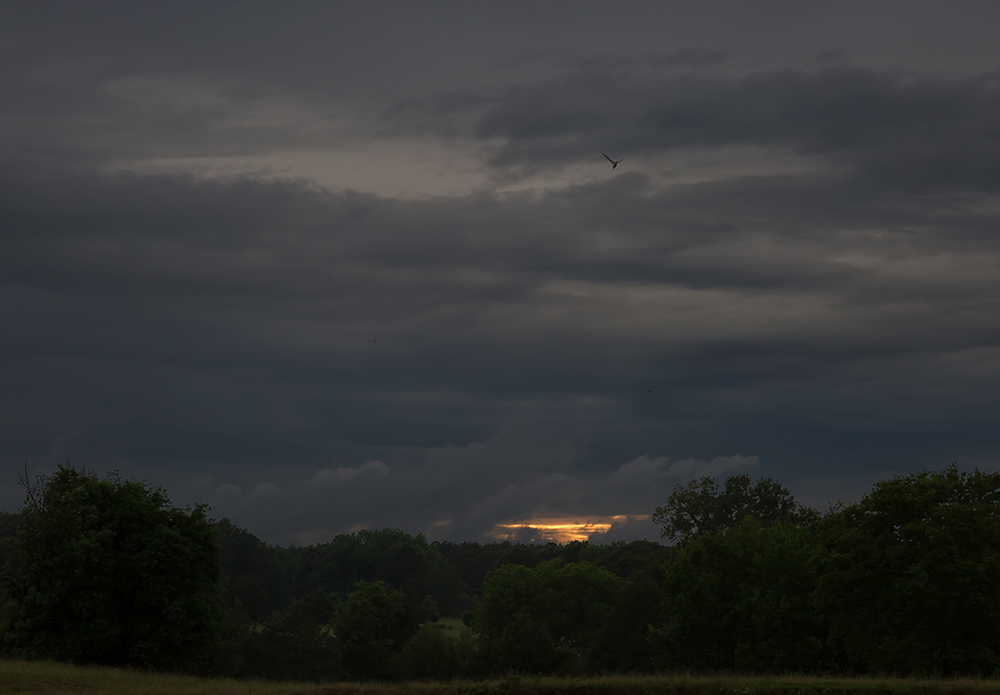
“From Whence We Came. Following Robinson Road, Mississippi, 2014” Photo courtesy of Jeanine Michna-Bales.
KS- After the initial idea, how long was it before you realized that it would be the huge undertaking it turned out to be?
JMB- I don’t think it really dawned on me how big the undertaking was until I started to actually capture some of the images for the series. I initially had about nine photographs to show when I took the project to three photo reviews: PhotoNOLA in December of 2013, FotoFest in Spring of 2014 and Review Santa Fe in the summer of 2014. It took me 3.5 years to capture all of the images. I drove out the warranty of our new car during that time.
I’d say that I am extremely well versed in what not to do and am still learning what to do. My background is in large format photography: 4×5 field camera with sheet film. This was my first time using a digital system. I used the Canon system because their tilt/shift lenses mimic the movements of the 4×5 camera. The digital sensors of the camera weren’t quite capable of capturing what I was envisioning. So, I had quite a time trying to figure out ways to work around the camera’s limitations in order to create the images that I thought would best tell the narrative. Digital cameras are known for generating noise under low light situations. I was trying to show a large depth of field at night. Not a good combination for crystal clear images. Each time the next generation of camera was released (twice), I traded in my old one. And each time, the technology was much better. I still wish I had the last camera when I started the project.
Logistically, covering all of the terrain was difficult. I would scope out possible locations during the day. Then, stay up all night or almost all night to photograph. I quickly figured out that about 3 days was my maximum time that I could function. Then, I would head back home and regroup. Spend time with my family. Do more research and then head back out. I tried to keep the images so that they tracked logically in relation to time: i.e. each station was still operating at the same time, season-wise (didn’t want to shoot something in the fall and have the next image be in the summer), etc.
Oftentimes, I wouldn’t have the information that I needed until I was able to actually get to a historical society or library in a given town. Or talk to local homeowners, etc. In the notes of the book, information is given that discusses details of why I photographed places even if I was unable to find written documentation that they were an actual part of Railroad. The UGRR was word-of-mouth because it was illegal to help. I kept that in mind while piecing together this route that someone could possibly have taken.
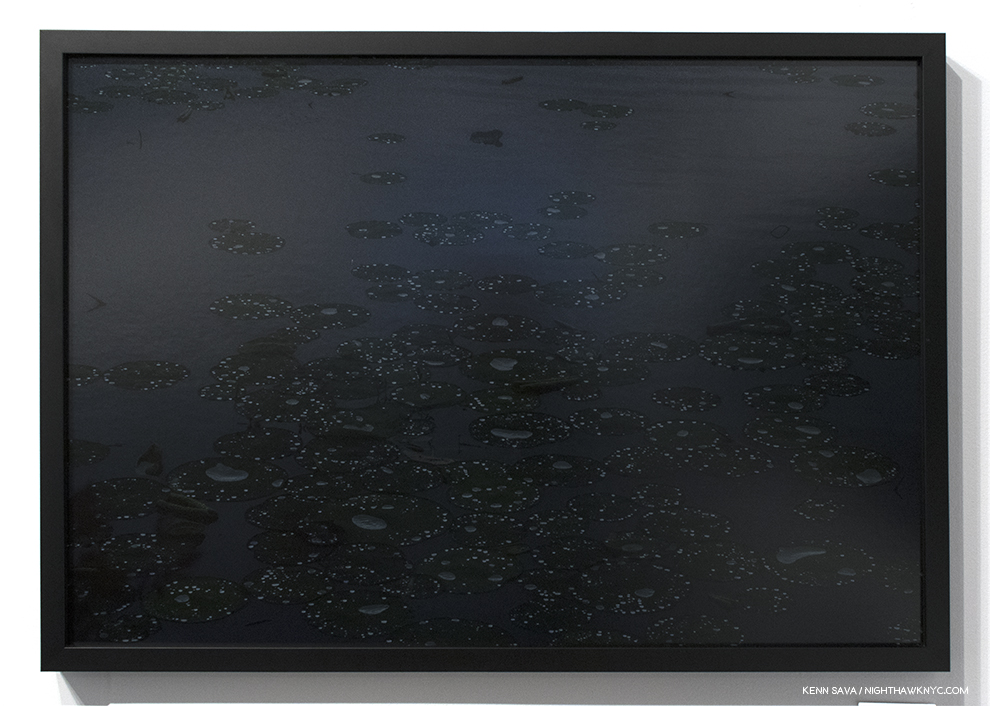
“Off the Beaten Path. Along the Yockanookany River, Mississippi, 2014,” as seen at AIPAD.
I also visited local libraries, state libraries, historical societies, national/state parks, and contacted various historians. Any books that I saw (in my own library or while at the library), I referenced their bibliographies looking for other sources of information. Currently, I’d say about 1/16 of the historical research is online at throughdarknesstolight.com. I am in the process of going back through all of my materials with the intention of putting as much of it online as possible. Some of the period pieces belong to specific libraries and collections. So, cost may become an issue as far as posting some of the items. But, I am adding to and updating the bibliography section that was pulled together from the publication and traveling exhibition of the series. The traveling exhibition has been extended through March 2024 and has about 8 more slots available for venues to book the show.
KS-Given the secret nature of the Underground Railroad, how hard was it to undercover the stories and details, all these years later, you wanted for your Photographs to tell the story?
JMB- Finding a lot of the details was quite difficult over the years. Keeping records was a great risk for those helping as well as for those escaping. So, there simply isn’t a lot of documentation that exists. Largely, the Railroad ran via word-of-mouth. I tried to keep this in mind while working on the series and find as much documentation as possible to support local oral histories.
A lot of the details and locations were pulled straight from narratives and reminiscences. In the north, different accounts referenced working with other station masters and often told tales of ‘cat and mouse’ games with local law enforcement officers, like Wright Rhea. He was the sheriff of Jefferson County, Indiana and used his office to capture many fugitive slaves.
In the end, is the documented route a known route that someone actually used to escape slavery? We simply don’t know. It is very possible. I made sure that each station or stop along the way was logistically feasible: i.e. stations in operation at the same time, geographically nearby, etc. From what I have learned, I don’t think that any specific route was used in the exact same order over and over again. That would have led to the capture of too many freedom-seekers.
I chose a first-person viewpoint to help us all understand that it was the freedom-seekers themselves that were making this tremendously difficult journey in search of a better life. They had some help along the way once they had to made it to the north. However the majority of the time, they were on their own. And they were in possession of amazing amounts fortitude, determination and sheer will.
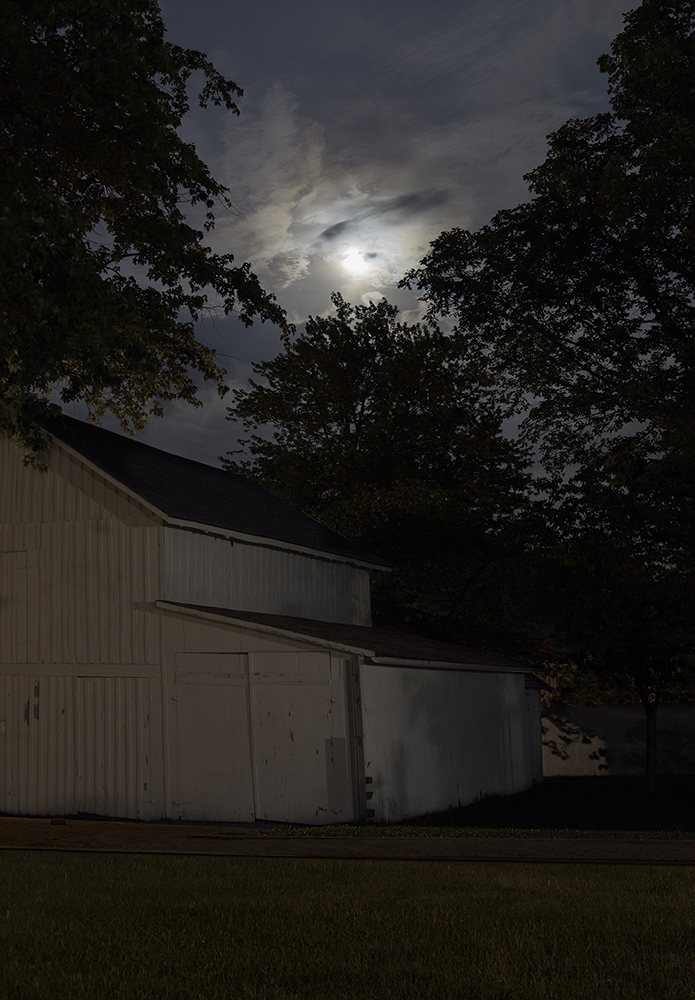
“A Safe Place to Regroup. House of Levi Coffin, who was unofficially dubbed the president of the Underground Railroad, Fountain City (formerly Newport), Indiana, 2014” Photo courtesy of Jeanine Michna-Bales.
KS- What were you the most surprised to learn?
The Underground Railroad was America’s first civil rights movement. It blurred racial, religious, socio-economic and gender lines. And united a diverse group of people in the common cause of finding a way to abolish slavery within the United States. One thing leads to another and many of the voices that spoke out against slavery ultimately tried to introduce a civil rights bill.
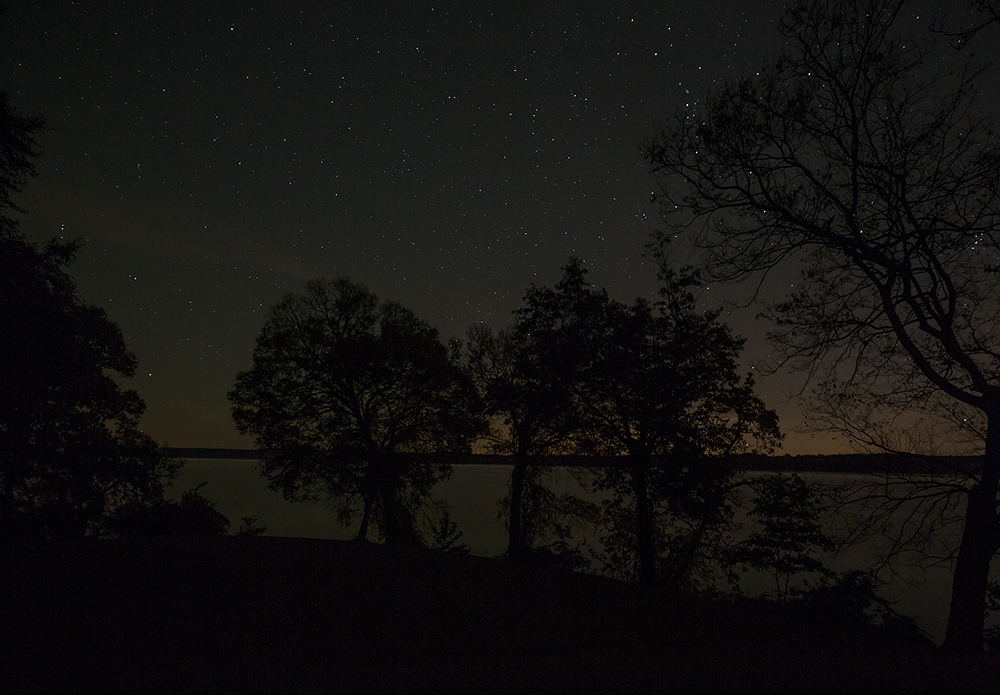
“Keep Going. Crossing the Tennessee River, Colbert County, Alabama, 2014” Photo courtesy of Jeanine Michna-Bales.
KS- You mentioned heading off to Washington DC and doing some research at the Library of Congress while you’re there. Are you still researching the Underground Railroad?
JMB- “Through Darkness to Light” is finished. Although, I do still keep up with books and information as they come out. I just ordered a copy of “Barracoon: The Story of the Last ‘Black Cargo’” by Zora Neale Hurston.
I was asked to give a talk at the National Gallery of Art on Through Darkness to Light with artist Clarissa Sligh. Our talk was entitled “The Evidence of Things Seen and Unseen” and was held in conjunction with the exhibition “A Thousand Crossings” by Sally Mann (Update- June 26, 2018- I just received the full transcript of Jeanine’s remarks at the National Gallery. It has been appended to the bottom of this Q&A).
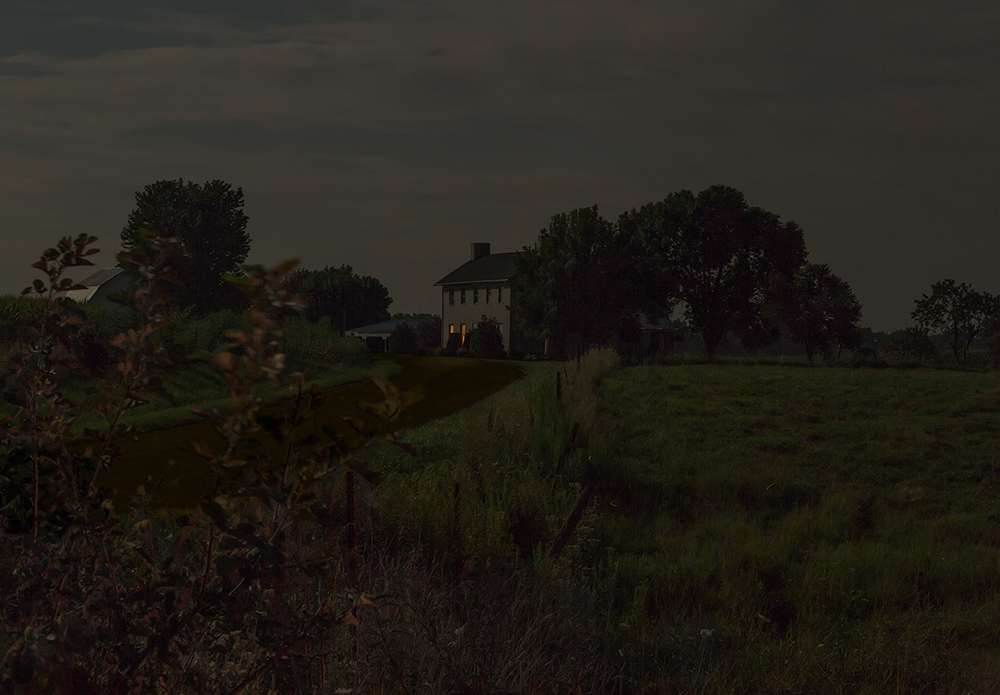
“A Brief Respite. Abolitionist William Beard’s house, Union County, Indiana, 2014” Photo courtesy of Jeanine Michna-Bales.
KS- Given how many miles the Underground Railroad covered, how did you decide on what to Photograph? Was it largely due to access to the remaining sites?
The UGRR encompassed countless, constantly changing routes. The documented route that I photographed was pieced together directly from the research for the project: i.e narratives, etc. Sometimes, what was planned didn’t necessarily end up what was photographed. Oftentimes, buildings had been torn down, were updated and lost their 19th century character, or simply they didn’t fit into the ‘look’ that was developing for the series.
For instance, “Approaching the Seminary” is a view of a corn field. The school house for the Union Literary Institute had been heavily damaged by a tornado. The school taught African Americans at a time when it was illegal to do so. Agriculture was a main component of their curriculum. And I also had come across a narrative of freedom-seekers being hidden in a corn field overnight because the station they had left was being watched by fugitive slave catchers, as well as the station they were headed to. The UGRR conductors were unsure of the property owner’s loyalties. But, they took a chance and were able to keep the fleeing slaves safe.
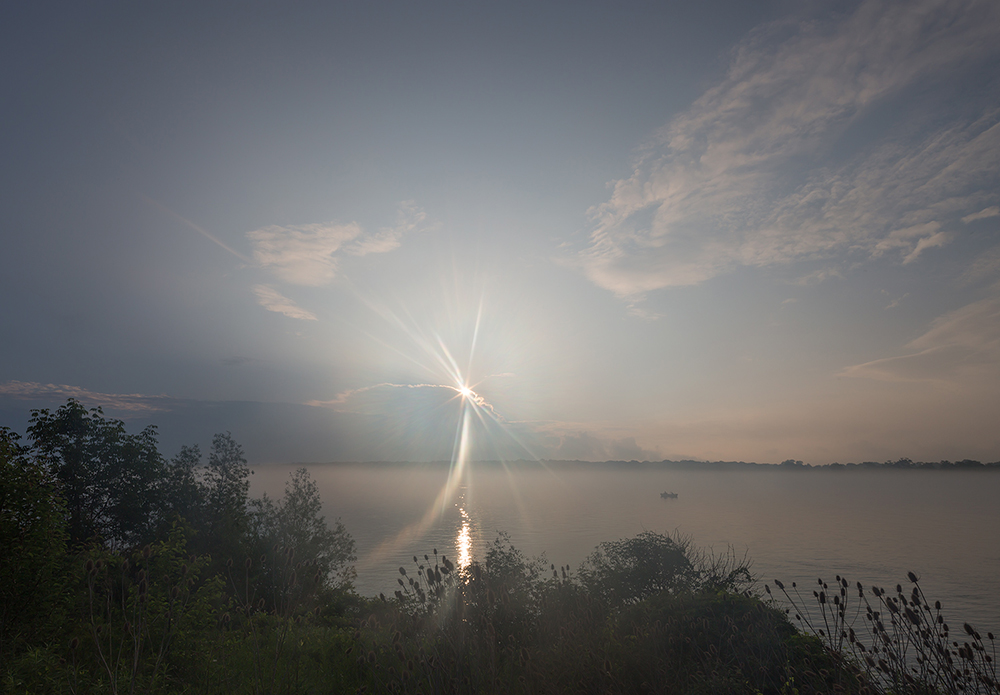
“Within Reach. Crossing the St. Clair River to Canada just south of Port Huron, Michigan, 2014” Photo courtesy of Jeanine Michna-Bales.
KS- “Through Darkness” has been on quite a journey, itself, as a traveling exhibition, with much more to come, looking at the schedule of venues on your site. If you could summarize the experience for you so far, what’s been the takeaway from it being in so many places?
JMB- The traveling exhibition launched in Evanston, Illinois in January of 2017 followed by other solo and group shows around the country. I have traveled to quite a few of the venues for artist talks and book signings. For me, the conversations resulting from the work is why I decided to become a full-time artist. A lot of those conversations are complicated and can be uncomfortable at times. These are topics that have been ‘brushed under the rug’ for years. And we are just now starting to address the lingering aspect of not having face-to-face dialogues with people who have different backgrounds or beliefs from our own. We are a deeply divided country right now. And have been in the past as well. How do we use our history to find a common ground? Can we all sit down and talk with each other? Not attack, belittle or try to persuade someone to our viewpoint. But, truly listen. And, I hope, ultimately have empathy for our fellow humans. It might be a lofty goal. But, I feel that change starts slowly – one conversation at a time.
Is there any one image in particular that stands out, perhaps due to it’s meaning for you, or the story of the Underground Railroad, or for what you had to go through to get it?
There are quite a few images that have special meaning to me in regards to the ‘help’ that I received along the way. There were so many times during the project that I would run into a dead end and not be able to find the information that I needed. As I mentioned above, I ran into William Beard’s descendent at an award show exhibition. There were many serendipitous moments throughout the series. Every time I would arrive to photograph at a location, a Cardinal would be there, as if letting me know this was the right location to take an image.
When I was out on the road photographing, I would scope out possible locations during the day and return at night to take the images. This left little time for sleep. When I was in Natchez, Mississippi, I had been out on several trips recently and was already tired. On the second night after staying out until 3:30am I headed back to my hotel to grab a cat nap. I planned to get up at 5am before sunrise to go photograph again. At the last minute, I decided I was too tired and turned off my alarm. At around 5am, the TV in the hotel room spontaneously turned on. It took me a minute to figure out what was happening. I turned it off and crawled back into bed. About 10 minutes later it turned on again. I got up and thought to myself, “Oh, alright, I’ll go out and photograph.” I ended up taking one of my favorite images that day “Moonlight over the Mississippi”.
I could mention other things that happened like this throughout the time that I worked on the series. And that is why I feel that the project chose me more than I chose to work on it.
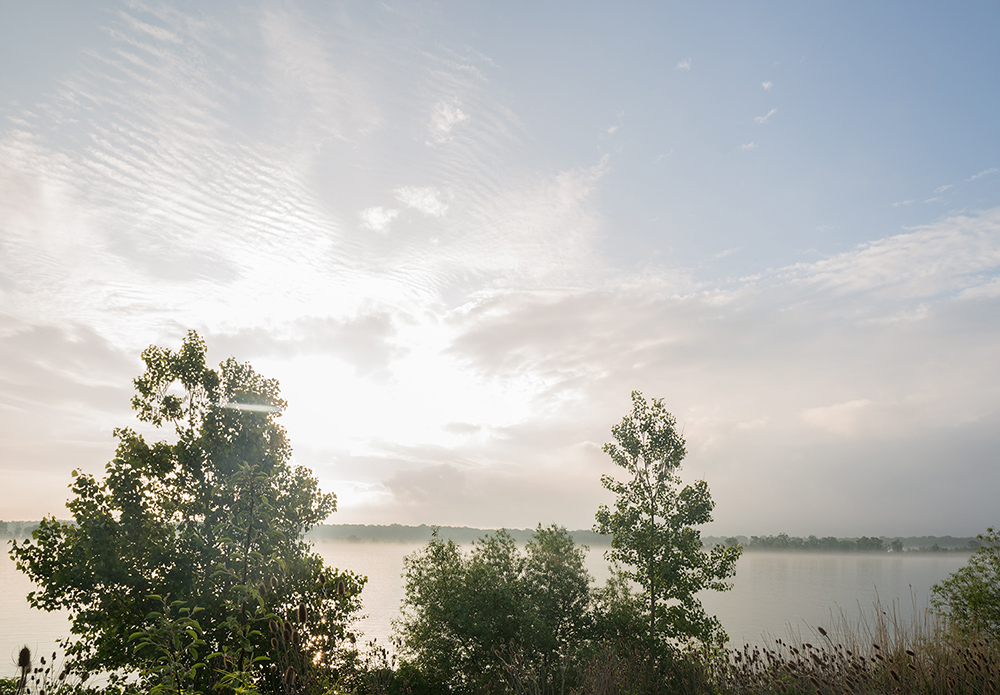
“Freedom. Canadian soil, Sarnia, Ontario, 2014” Photo courtesy of Jeanine Michna-Bales.
KS- How close do you feel “Through Darkness” came to realizing your initial vision, or did it wind up being something completely different from it?
JMB- The initial thought was, ‘what would it look like escaping from slavery to freedom?’. I had started to research the series. I visited the Levi Coffin house in Indiana and took some images of the hiding places in the house during the daytime. I also took some images of a plantation during the day. I was completely disappointed in the results. But, the project wouldn’t let go. I kept researching and writing about what kept drawing me back to the topic. And then several years later, I was visiting my husband’s family in Tennessee and was out photographing at night in the woods. And I took the image “Through the Underbrush”. Once I saw that image, I knew that was the way that the series needed to be portrayed. It pointed directly to the research because the freedom-seekers moved under the cover of darkness. Darkness lent the images that sense of uncertainty and foreboding. Feelings, I imagine, one would be feeling on such a journey. And darkness also gave rise to the title of the series as well. And then I kept finding references to it in various period writings, especially an amazing passage from one of Frederick Douglass’s speeches in England. I now close my talks with his words.
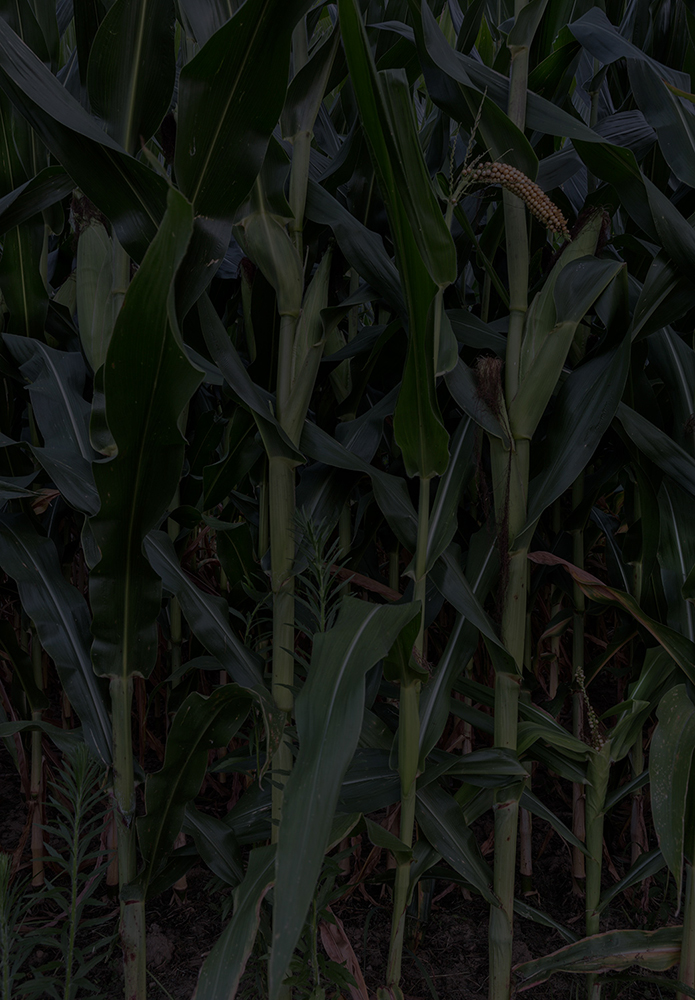
“Approaching the Seminary. Near Spartanburg, Indiana, 2014” Photo courtesy of Jeanine Michna-Bales.
KS- Without giving away your secrets, could you speak a little about what went into getting these beautiful nocturnal Photographs?
JMB- From a technique called stacking – based on the fact that digital noise is generated randomly, where you take several images of the same scene and them stack them together at different opacities in Photoshop – to literally cloning out each little speck of noise and dust in each image. The latter would take me about 3 weeks at 8 hours a day for each image. Luckily, I didn’t have too many images that had that much noise in them. I was able to trade the initial camera I was using in for the next generation and the technology had drastically improved. I also learned to never set my ISO above 400. And I tried to keep it between 100 and 200. So, I ended up with longer exposures which I think lend that painterly quality to some of the images. I also quickly figured out that there is virtually no light in the woods on a new moon night. So, I did end up using some light painting in order to get any information to register on the light sensor. Light painting is a technique where while the camera shutter is open during a long exposure, you are able to ‘paint’ the scene with light. I have a pretty good collection of various lights that I can use now. The technique is a lot of trial and error because objects in the foreground will be much brighter than objects in the background. Since, it was a digital system, I could view ‘test’ images and be able to ‘paint’ better on the next capture.
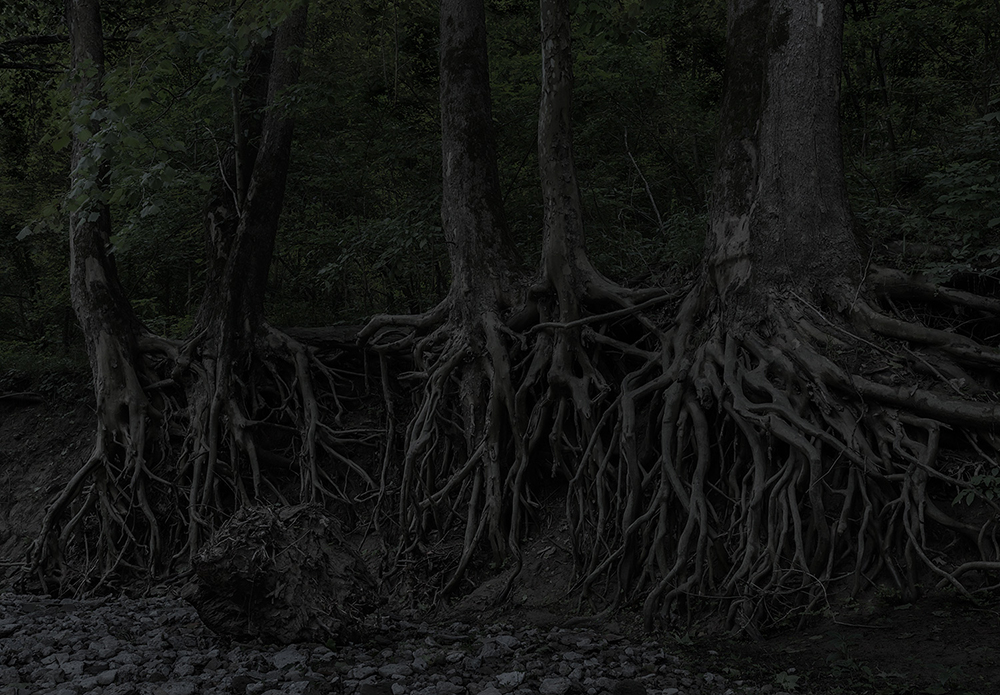
“Eagle Hollow from Hunter’s Bottom. Just across the Ohio River, Indiana, 2014” Photo courtesy of Jeanine Michna-Bales.
KS- Of the images from the series I’ve seen, “Eagle Hollow from Hunter’s Bottom” continues to captivate me. Why did you choose that particular spot? Was it the beauty of the roots, or is there something more relevant to it?
JMB- There were a system of safe houses that ran up from Eagle Hollow to Ryker’s Ridge and then up into one of three main routes through Indiana: western, central or eastern. In the image “Over the Hills” you are standing in Kentucky, a border state – and for all intents and purposes a southern state. The blue hills you see in the background are Indiana. You can also see more of that scene in the panoramic image “The River Jordan”. The land at the Ohio River is low and flat, but rises steadily up over the hills or mountains into the main part of Indiana. Ryker’s Ridge has a gorge or cut that goes from the top down to the river’s edge. Most of the year it is a dry creek bed. But, in the spring with the snow pack melting water rushes down into the Ohio River causing erosion along the edges. I was hiking through the bottom portion of this area with my Mom looking for a location to photograph. And we stumbled on the roots of the trees. Some of the places were big enough that someone could crawl into them and curl up and hide. The exposed roots symbolized so much and they became “Eagle Hollow from Hunter’s Bottom”.
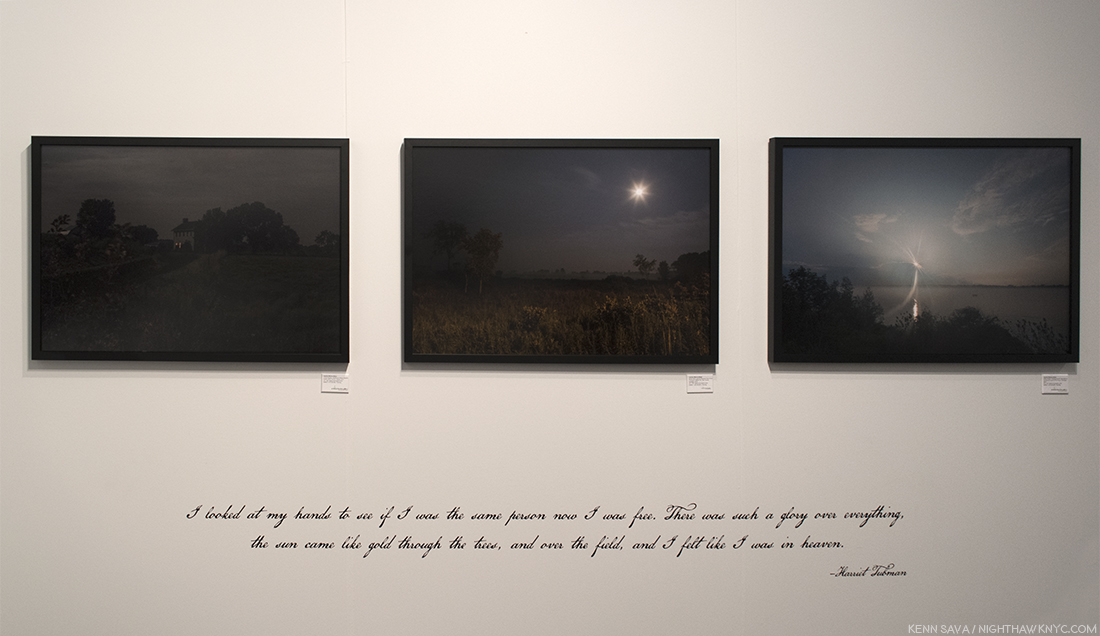
Excerpts from “Through Darkness to Light” as seen at Arnika Dawkins Gallery’s booth at AIPAD, 2018. Contemporary testimonials, quotes (like this one from Harriet Tubman) and songs are an integral part of the the project.
KS- You’ve released a book that includes contributions from former Ambassador Andrew Young, historian Fergus Bordewich, Eric Jackson, head of the Black Studies Department at Northern Kentucky University and Robert Darden, a professor and author, that would indicate the book, and the project, walking the line between Art and history. What was the experience of working with them like?
Working with the contributors was amazing. They each had their own research and viewpoints to contribute to the project. I did want the book to cross over into different areas of interest and not just be a Fine Art book. The essays give us a glimpse of the United States in the mid-1800s. And are necessary for us to understand the back and forth of the north and south that lead us to the Civil War. “Through Darkness to Light” is a visual essay meant to grab the viewer and thrust them into the journey. Sometimes, pictures can speak louder than words.
Fergus Bordewich has written many books on the historical United States. His book “Bound for Canaan” is a well-written, resource-rich view into the UGRR. So, I approached him for the essay that would lay the groundwork for the existence of the UGRR in the U.S.
I came across Dr. Eric Jackson’s name when I found an article he had written in “Traces”, the magazine for the Indiana Historical Society. In his essay for the book, he was able to highlight several escapes from slavery. Especially, one from the region.
Singing and spirituals were such a part of the research I was digging through, I knew that topic had to be addressed. I heard an interview of Professor Darden on NPR and he agreed to contribute to the book.
Trying to get the project in front of Ambassador Young was a long, interesting process over the course of two years. I eventually was able to speak with him via telephone thanks to his assistant. I recorded the conversation and that transcript was reworked into the foreword for the book. He recited song lyrics, even singing some, from memory. He discussed their relevance to today. And it all tied back to the songs and spirituals from slavery times. The conversation couldn’t have been scripted better.
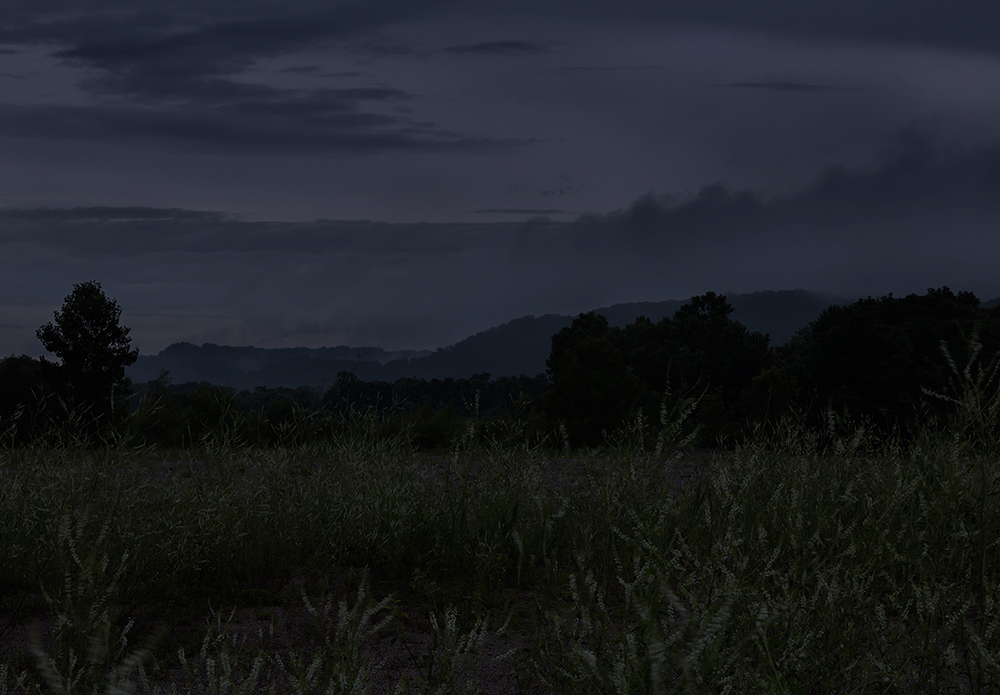
“Over the Hills. North Trimble County, Kentucky, 2014” Photo courtesy of Jeanine Michna-Bales.
KS- You’ve now released a limited edition set of prints. How did you decide which prints to include in the limited edition out of the 81?
As for almost everything with the series, the research informed the narrative. I pulled 12 images together, along with 12 quotes from UGRR participants that give us the best sense of what a journey to freedom may have been like.
KS- As “Through Darkness” took so long to complete, you began two other projects, “Fallout: A Look Back at the Height of the Cold War in America,” 2013-, and “Frack-Tured Land: Seismic Activity in the Barnett Shale, 2015-, along the way. With “Through Darkness,” all three focus on giving the viewer a sense of the direct experience of their subject- what it was like to be on the Underground Railroad…The effects of fracking…What it was like to live in a period of heightened nuclear tension. All three show us the past as “warning” of the future. In each case, you have undertaken extensive research of the subject, where other Artists might not. Why? What do you feel it adds to your work? Is it hard to walk the line between historic fact and Art, even after the fact, like with the Underground Railroad?
JMB- Yes, I extended my stay in Washington D.C. a few days in order to do some research at the Library of Congress for two other projects. One I started in 2013 is called “Fallout: A Look Back at the Height of the Cold War in America, circa 1960.” I was freelancing for a local magazine in 2013 when an assignment came in to photograph a backyard ‘bomb’ shelter in Dallas.
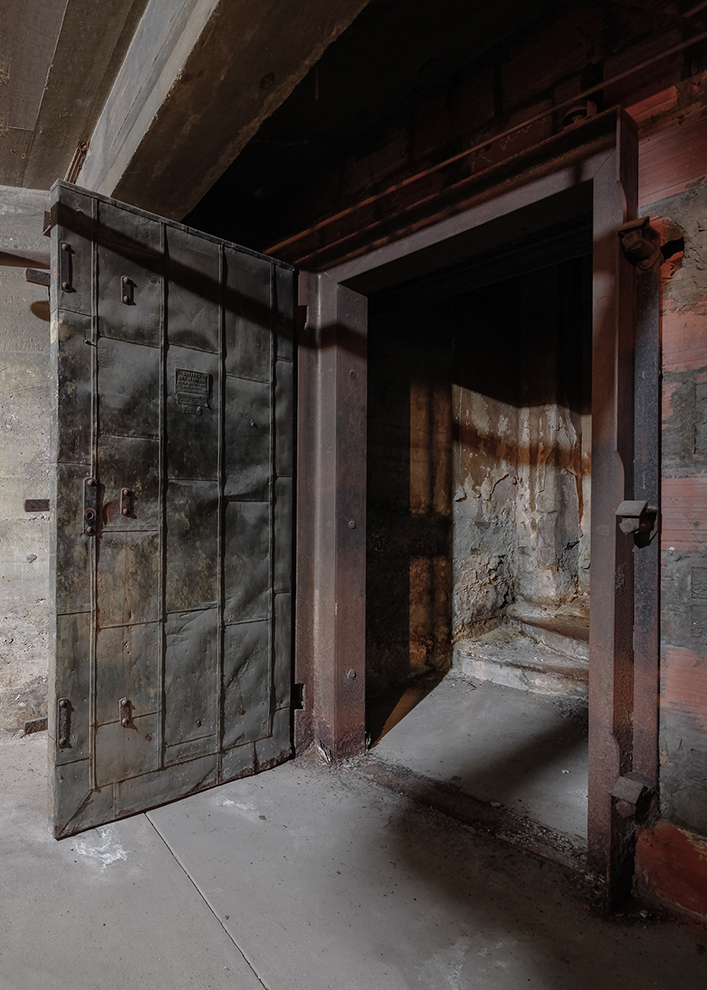
“Interior Entrance. Public shelter, Paris, Texas, 2013,” from “Fallout: A Look Back at the Height of the Cold War in America Photo courtesy of Jeanine Michna-Bales.
I asked to come along on the shoot. And I was dumbfounded with how I felt after climbing down that ladder and stepping into this space. All of the fallacies were just glaring us in the face: i.e. hand-crank for clean air, only expecting to spend 7 days below ground, you had to go outside the blast door to use the ‘toilet’, etc. I went back and photographed that space and embarked on a tour of U.S. fallout shelters and the project entitled “Fallout”. How could/can photographs convey such a sense of panic, fear, and even resignation? The government was pulling reports studying fallout patterns, casualty statistics, etc. They knew that the shelters were useless. But, they had to keep the population calm.
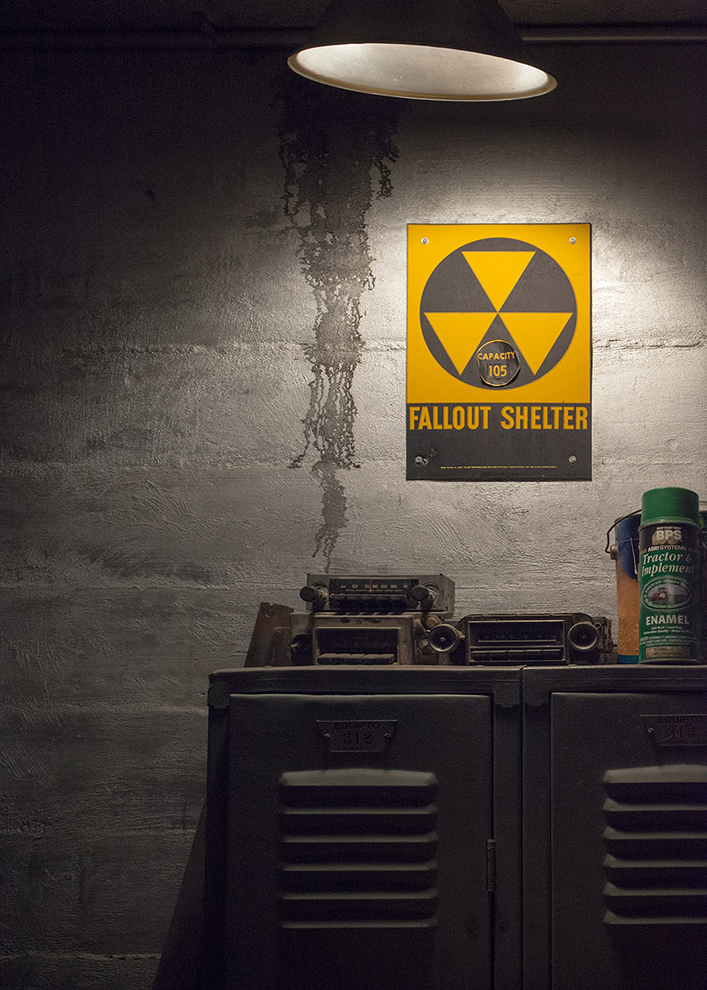
“Capacity 105. Public Shelter, Power Plant, Weatherford, Texas, 2,’ from “Fallout: A Look Back at the Height of the Cold War in America Photo courtesy of Jeanine Michna-Bales.
Thousands of fallout shelters were left behind by the Cold War generation. Many remain intact, but are hidden, underground and unseen. I believe, in many ways, these spaces may be viewed as a warning to us today. Referencing declassified information from the Cuban Missile Crisis, I have been working since 2013 on a series that gives voice to these unique architectural spaces that were built throughout the U.S. in the 1950s and ‘60s. Spaces that one can step into and feel how terrified most Americans actually were at the thought of a nuclear holocaust. The images will ultimately highlight the Cold War experience through shelter spaces in 14 cities.
Found documents from the period overlaid on some of the images offer a chilling insight into the psychological effects of the Cold War on government officials and ordinary citizens. These period documents play an important role by serving as a kind of ‘interview’ with those who lived through this experience but are no longer here to bear witness. The juxtaposition of shelter spaces that have remained virtually untouched except by the effects of time, and found text like casualty statistics helps us understand that Civil Defense was only a way to maintain some semblance of order with the threat of nuclear war hanging over Americans’ heads day in and day out. Most major cities only had enough shelter space for roughly 40% of their daytime population. With the advent of faster technology to deliver nuclear warheads in the 60’s and later, the remaining populace would face dire circumstances if they survived at all.
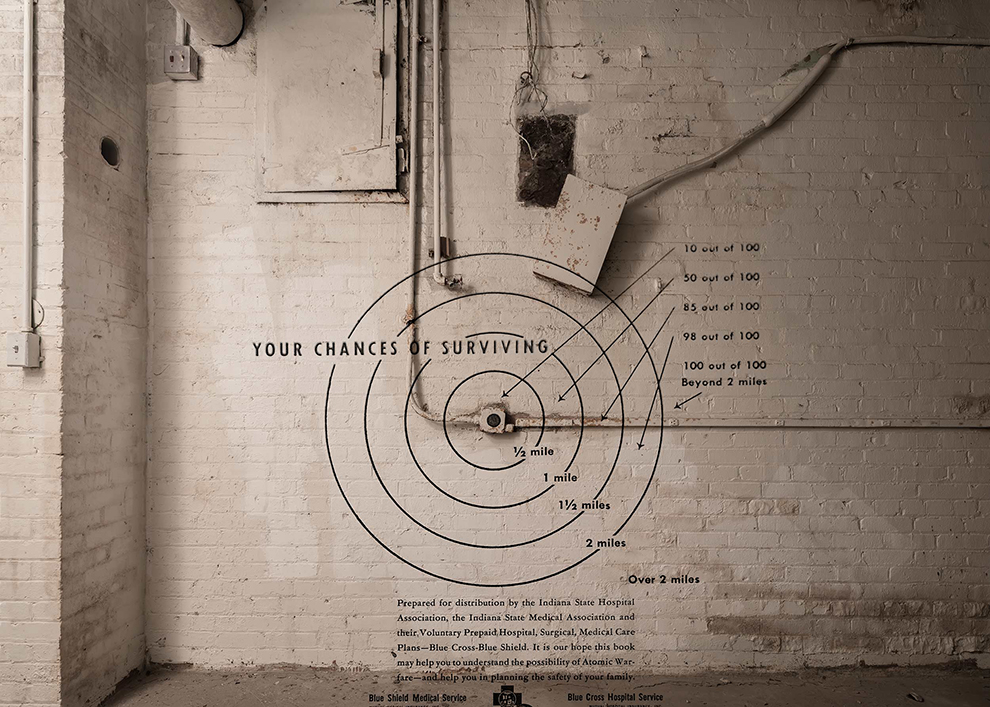
“Survival Chances. Indianapolis Civil Defense Headquarters, Indianapolis, Indiana, 2016.” Photo courtesy of Jeanine Michna-Bales.
Fast forward to December 22, 2016 when President Elect Donald Trump and Present Vladimir Putin both declared that they were going to increase their respective countries nuclear arsenals. Hearing this we might actually think that we had stepped back in time to the height of the Cold War.
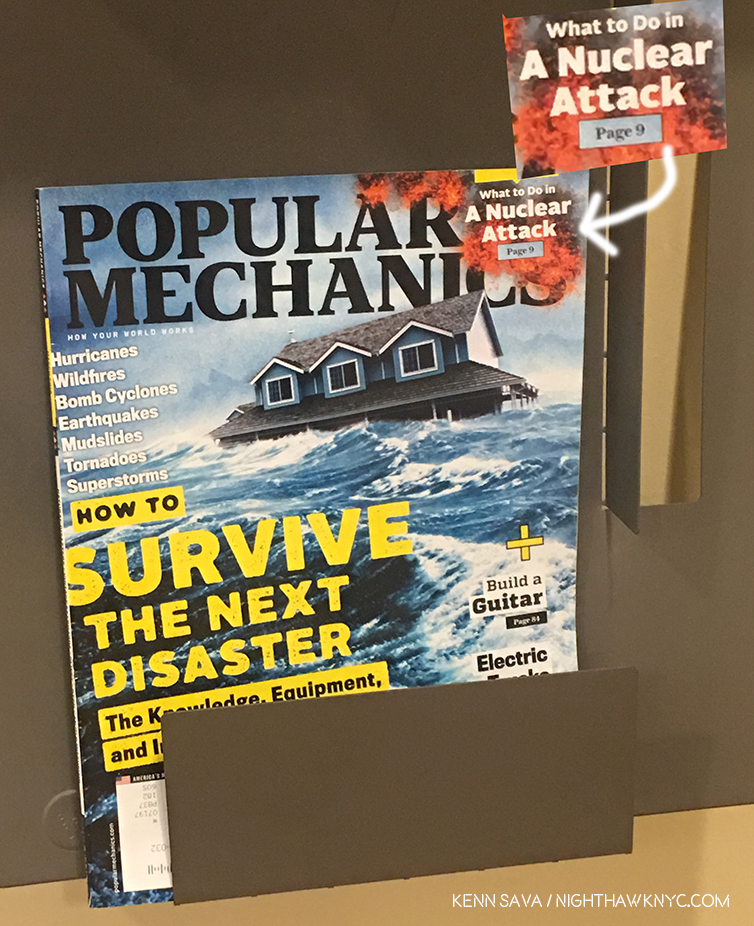
Popular Mechanics Magazine, February, 2018. “The good news is, if you make it through the blast and the shock wave, you are now in a survivable situation.” Keyword= “IF.”
In light of these announcements and other recent developments, it is more vital than ever to view our uncertain present through the lens of the past. If you take away the fact that one of the announcements was made via Twitter, the names and the date, you’d think we were back in the 1960s. Have we not learned anything from our past? Why does history need to come full circle? I think these fallout shelters and all of the pamphlets and government studies sit as a warning to us today. Don’t make the same mistakes. Evolve. Learn. And use the past to find a better way to navigate the future.
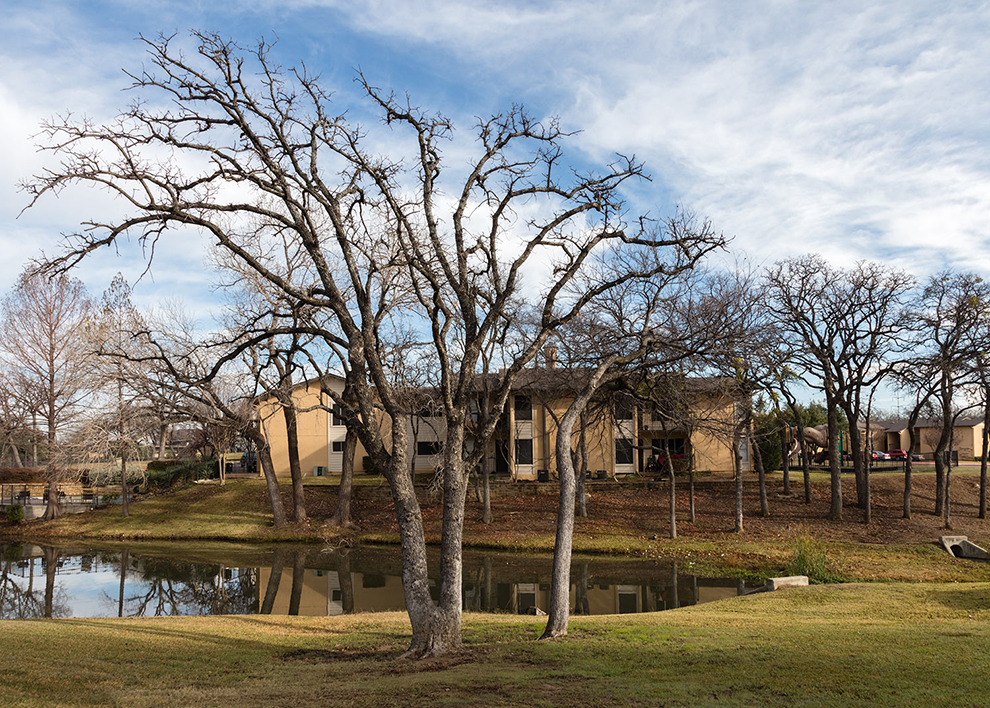
“Earthquake Epicenter: 2.3 magnitude at 7:37 am on January 6, 2015 Tower Village Apartments; Irving, Texas,” 2015, from “Frack-tured: Seismic Activity in The Barnett Shale.” One of seven earthquakes that occurred on the same day. Photo and caption courtesy of Jeanine Michna-Bales.
The reason I chose to photograph “Frack-tured: Seismic Activity in The Barnett Shale” was because we had moved from San Francisco, California to Dallas, Texas in 2004. We had earthquake insurance in California. And initially didn’t have it in Dallas. We do now. I was sitting at my desk working, when all of a sudden our house shifted back on its foundation (pier and beam foundation) about an inch or so and then slammed back into place again. The desk drawers were rattling like crazy. I went to get online to see what was going on. My initial thought was that it was an earthquake. But, we weren’t supposed to be having them here. The web was so jammed that I was unable to access any sites to see if it was an earthquake for about 45 mins.
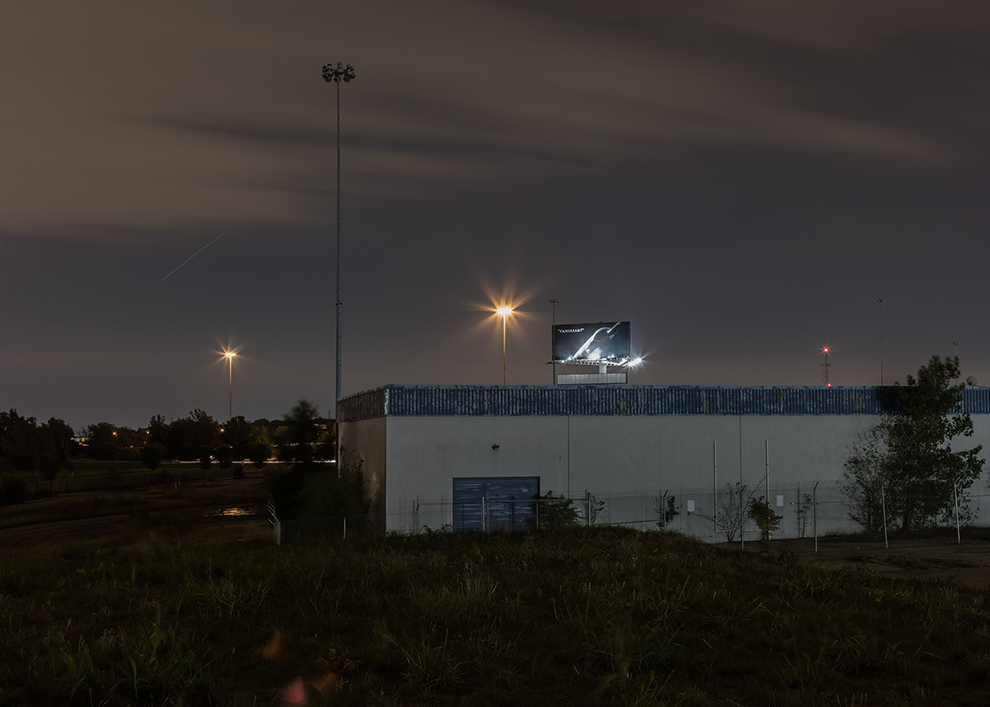
“Location of the Old Dallas Cowboys Stadium, Irving, Texas.”
One of five earthquakes in the same day. The previous day had seven and the day after had three.
Once I was able to confirm that it indeed was an earthquake, I started to dig into what was going on. That’s when I learned that the Dallas-Ft. Worth area had no earthquakes on record until 10 hit the area within roughly a 24-hour period surrounding Halloween in 2008. And that clusters of earthquakes had been hitting 3 major areas around the DFW metroplex since then. This was 2015. And that became the year with the most earthquakes on record over 100 and magnitudes and frequencies were increasing. Why wasn’t I aware of this? Why was all of this information hidden? What was causing the earthquakes? Nothing in Texas is built to seismic standards, nor retrofitted. What are the implications of that?
I wanted people to be aware that we had been thrust into an active earthquake zone by the oil and gas companies. We are one of 17 areas within 8 states that are experiencing induced or manmade earthquakes. Scientists have linked this seismic activity to wastewater injection wells as far away as 50km and some say even further.
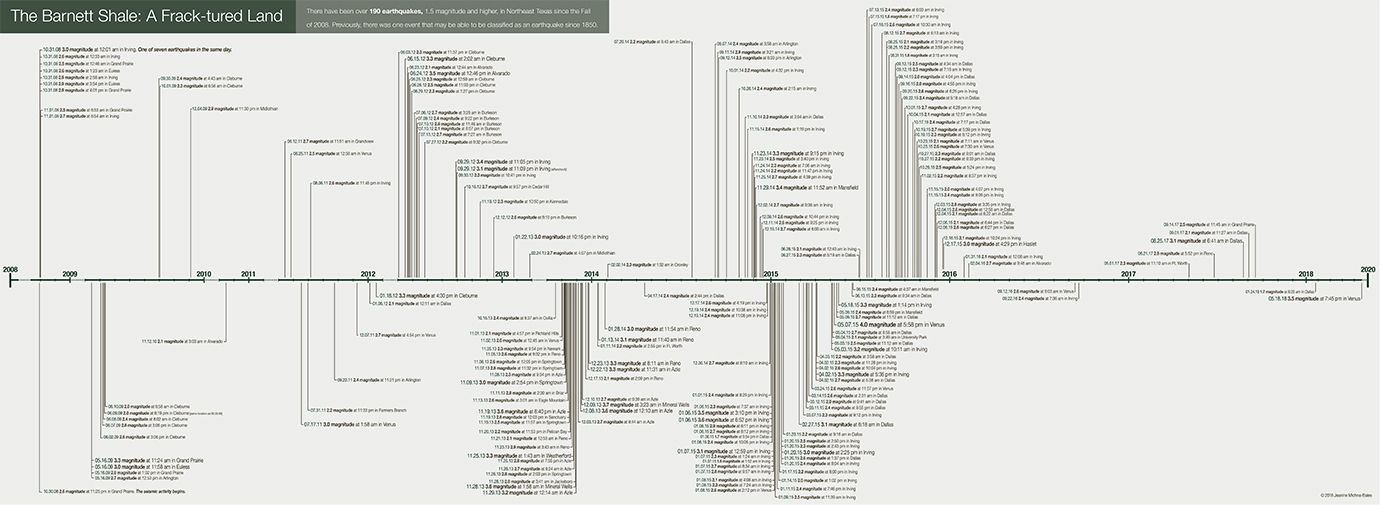
Jeanine Michna-Bales, “Artist’s timeline of earthquake data” pulled from the U.S. Geological Survey (earthquake.usgs.gov) and Earquaketrack.com. Not “Art” per se, rather one byproduct of her research. In an email to me on June 3rd, Jeanine told me that she had just updated this chart to include a 3.5 magnitude quake that occurred on May 21st, while she was in Washington. Click here for full size.
And another project that I have been researching for a few years and that I plan to start image capture on this fall is about the National Woman’s Party and their 1916 western campaign. Hundreds of women were sent west to the 11 states where women had the right to vote, asking to put aside all political agendas except for women’s suffrage. I am attempting to get the project ready for the centennial anniversary of the 19th Amendment in August of 2020.
I think my research process informs my projects from their titles, down to what and how I choose to capture the images. The research validates the images. And the images are ways to get complicated, disturbing, confusing, and relevant information out into the world. The visuals draw you into the narrative and make you start to learn more. This starts conversations. And the dialogue is what I am most interested in. Can we have an open discussion in mixed company about racial profiling and the prison industrial complex? Can we discuss our countries nuclear policy? How does this align with other countries that have nuclear warheads? What are the alternatives to fossil fuels? Is contamination, air and water, earthquakes, etc. worth independence from foreign oil? Can we actively and passionately explore other energy options? Questions spark discussions. And face-to-face conversations are what we are missing nowadays. I think they can lead to empathy and understanding. And we need to have more of them each and every day.
My projects walk the line between fine art and documentary. In my mind, the two are closely linked. I like to think that if I document a given project in a visually compelling way, then people will be drawn into the series. I want them to ask questions and want to learn more about the ‘who, what, where, when and why’. Are these topics relevant to contemporary society? I want the work to start conversations. Our society, and societies in general, has a tendency to come full circle in relation to history. The pendulum swings back and forth. I hope my work helps us make a more informed path for our collective future.
KS- Why did you decide to become an Artist? Who were your influences? Do you paint or draw?
JMB- I have always been interested in art. Over the years, art classes were some of my favorite ones. I used to be able to draw and paint pretty well. I’m not one of the naturally gifted people out there. So, without practice the skill diminishes.
My becoming an artist has been a long, winding journey. My former career was in advertising as an art director. Basically, the skills I learned from that job have served me well when I finally decided to take the leap of faith and become a full-time artist. I still thoroughly enjoy coming up with the concept for a new project. I use my word lists to come up with titles and descriptions. I am able to design and produce my own promotional materials. I am somewhat comfortable talking in front of crowds. However, I do still get nervous and tongue-tied.
While I was in advertising, we always joked around about the fact that what we were doing wasn’t ‘brain surgery’. Translation: our work wasn’t particularly important, unless of course, you were the client. There was something missing for me. I started to photograph projects on the side as a creative outlet. Some of this earlier work is in the archive section of my website. Again, I still felt like something was missing. But, I had no idea what that something was. Now, as I look back, I understand that my projects didn’t have a purpose. They were lacking a narrative, one that supports a broader purpose for being. The projects weren’t asking questions and starting conversations.
Fast forward to the late 1990s and early 2000s. I started writing, long hand, three pages a day. This is how I determine what topics I am drawn to and why. I can flush out artist statements and other things. Sometimes just by showing up to the page, I am rewarded with ideas. Such was the case back in 2002 when the idea for “Through Darkness to Light” materialized from the tip of my pen. It took 14 years, but I think I have managed to do the idea a bit of justice. Get the work out into the world. And get people talking. Because, as I mentioned before, change occurs slowly, one conversation at a time.
——————————— End———————————–
BookMarks- As mentioned in the Q & A, “Through Darkness to Light” is accompanied by a beautiful book of the same name published by the Princeton Architectural Press with 192 pages, 100 color illustrations, and 13 black & white illustrations, ISBN 9781616895655. Signed copies, and/or the Limited Edition Portfolio, may be obtained through Arnika Dawkins Gallery or PDNB Gallery.
For further information- Jeanine has 2 comprehensive websites, one for her Photography including all of her projects, and a separate site dedicated to “Through Darkness to Light,” which includes fruits of her research, resources for educators and an extensive Underground Railroad Bibliography. It also includes the schedule for the traveling exhibition of “Through Darkness to Light,” here.
*- Soundtrack or this Post is “Safe House,” by Senses Fail from “The Fire.”
My thanks to Jeanine Michna-Bales.
————————————————————
UPDATED- July 20, 2018-
Here is the video of Jeanine and Clarissa Sligh’s remarks at at “The Evidence of Things Seen and Unseen,” on May 20, 2018, at the National Gallery of Art, Washington, DC, which was presented in conjunction with the Sally Mann Retrospective currently on view there. A transcript follows.
Here is the unedited transcript of Jeanine’s talk I received from the National Gallery-
“Hello, everyone. Well, thank you so much for having me. I appreciate it. So this project basically took me 14 years to complete. I did have, at the time when I started it, a job in advertising– like Sarah had mentioned, my degree. And I guess I was researching on the side. And it was before the Freedom Trail Initiatives, and so a lot of the information was very difficult to find.
So I was lucky enough to kind of stumble on a treasure trove at the Indiana Historical Society, where there was one librarian who had been working there for years and years and years. And any time she came across any information on the Underground Railroad, whether it was a newspaper clipping from the time period or something more recent, she would make a photocopy of it and stick it into this clippings file folder. And so when I stumbled on that, I was extremely excited to find some of the information.
So I have, I guess, a lot of quotes from the participants because all of the people that were part of this journey have all passed away. And so, I wanted to bring their voices and their thoughts into the project. And so, you’ll see throughout the book and the slides different quotes from people. So this is actually from Frederick Douglass. And he’s trying to give us a sense of what slavery would have been like.
And he states that he could think “No better exposure of slavery can be made than is made by the laws of the states in which slavery exists. If more than seven slaves together are found in any road without a white person, 20 lashes apiece. For visiting a plantation without a pass, 10 lashes. For letting loose a boat from where it is made fast, 39 lashes for the first offense, and for the second, shall have cut off from his head one ear.
For keeping or carrying a club, 39 lashes. For having any article for sale without a ticket from his master, 10 lashes. For traveling in any other than the most usual and accustomed road when going alone to any place, 40 lashes. For traveling in the night without a pass, 40 lashes.”
He further states, “I’m afraid you do not understand the awful character of these lashes. You must bring it before your mind, a human being in a perfect state of nudity, tied hand and foot to a stake, and a strong man standing behind with a heavy whip knotted at the end, each blow cutting into the flesh and leaving the warm blood dripping to the feet– and for these trifles.
For being found in another person’s quarters, 40 lashes. For hunting with dogs in the woods, 30 lashes. For being on horseback without the written permission of his master, 25 lashes. For riding or going abroad in the night or riding horses in the daytime without leave, a slave may be whipped, cropped, or branded in the cheek with the letter R, or otherwise punished such punishment, not extending to life, or so as to render him unfit for labor.” All of these laws referred to, you can still find in writing coming from Bravard’s Digest, Hayward’s Manual, Virginia Revised Code, Prince’s Digest, Missouri Laws, and the Mississippi Revised Code.
I wanted to go over some of the research that I did. Basically the entire project was informed by the research. Like I said, spent a long time on it, and that kind of gave me the framework of this series. And it informed the title, as well. So I found that fugitives would travel roughly 20 miles per night. So these are some of the maps that I was consulting to try to figure out stations that existed and then also tried to figure out what stations were nearby that they could have gone through within that amount of distance.
I read many, many, many first-person narratives. And the WPA in the 1930s actually went back and interviewed former slaves. And they put out these books. And they divided them by states from where they were living. I also consulted many other books in different historical societies and other such sources.
And it was the very heavy reading to do. Often times, I would have to put it down and go play with my dog or hang out with my son just to get the images that I had been reading about out of my head. This is kind of, maybe– I don’t know– an 8th or a 16th of the library that I built up while I was doing all the research.
So I would take some of those clipping files that I mentioned and put them into binders. And so I have little stickies kind of referencing where they were and if they were irrelevant along the path. And some of them are pulled from masters theses. I’m getting them from writing different historians and asking if they can share some of their research. So yeah, it was a logistical puzzle to put together.
I did consult a lot of period sources. So on the left is a handwritten minutes page from the Neil’s Creek Anti- Slavery Society. And they were in southern Indiana. And basically, their constitution is what you’re seeing up there. And their goal was to be the total abolition of slavery.
On the right, actually, it’s a pledge from J. Pearce. And so, at the time, it was illegal to help people escape slavery. And he was proclaiming publicly by signing this pledge– he signed his name to it– and then he wrote out that he
And he was proclaiming publicly by signing this pledge– he signed his name to it– and then he wrote out that he
was going to help. And then on the back also above his name, you’ll notice that there’s a cipher there. So they were actually encoding messages.
This is the Free Labor Advocate and Slavery Chronicle. So there was an area in Indiana kind of on the Ohio border. And it was a Quaker stronghold. And a lot of the people that had decided to live there had moved from Tennessee and North Carolina. So they had witnessed the atrocities of slavery firsthand. They were adamantly opposed to it.
What you’re seeing are some ads that are in that newspaper. And they’re actually free labor goods stories. So they were purchasing produce, cotton, and other things that were not made with slave labor.
This is the documented route that I settled on to photograph. It was changing constantly as I was going through the process, trying to find locations. Did the Underground Railroad exist in the South? Not so much.
So I kind of pieced together a route that I thought somebody could have possibly taken in the South using those first-person narratives about where they would have stopped. I did find that people would run away in protest just for a day or a week or something and go to the neighboring plantation and then return back. So I figured that they would adopt that philosophy if they were running permanently.
So it goes from Louisiana, across Louisiana, up through Mississippi, the corner of Alabama. Then you’re in Tennessee, Kentucky, Indiana, Michigan, and finally ending in Sarnia, Ontario. Detroit was actually dubbed “Midnight.” So slave catchers, if they didn’t catch anybody within the first couple hundred miles, they would just go to Detroit and wait. I can’t imagine getting that far and getting caught in the end.
This is the first image in the series. And it’s entitled Decision to Leave– Magnolia Plantation on the Cane River in Louisiana. And it was taken in 2013. Frederick Douglass states, “No man can tell the intense agony which was felt by the slave when wavering on the point of making his escape. All that he has is at stake. And even that which he has not is at stake also. The life which he has may be lost. And the liberty which he seeks may not be granted.”
Southern Pine Forest Following El Camino Real, La Salle Parish, Louisiana, 2014. Stopover, Frogmore Plantation, Concordia Parish, Louisiana, 2014. John Little, who is a former slave says, “‘Tisn’t he who has stood and looked on that can tell you what slavery is. ‘Tis he who has endured.”
Moonlight Over the Mississippi, Tensas Parish, Louisiana, 2014. And Frederick Douglass again states, “Brothers and sisters we were by blood, but slavery had made us strangers. I heard the words ‘brother’ and ‘sister’ and knew they must mean something, but slavery robbed these terms of their true meaning.”
On the left is Sunken Trace, Claiborne County, Mississippi, 2015. And on the right, Determining True North in the
Rain Along the Southern Part of the Old Natchez Trace, Mississippi, 2014. And this is the account of the escape of Reverend Jacob Cummings. A local grocer heard that the Smiths were mistreating their slaves. He showed Cummings a map of Lake Erie, spoke with him about Ohio and Indiana, taught him to find the North Star and determine direction by moss on the tree, and encouraged him to make a run for it. In July 1839, Cummings fled. And he was successful.
Cypress Swamp, Middle Mississippi, 2014. The Censor, which is an anti-slavery weekly– and this is from February 26, 1868, “The conveyance most used on the southern section is known as the foot and walker line– the passengers running their own trains, steering by the North Star, and swimming rivers when no boat could be borrowed.”
Keep Going, Crossing the Tennessee River, Colbert County, Alabama, 2014. Frederick Douglas says, “A keen observer might have detected in our repeated singing of ‘Oh Canaan, sweet Canaan, I am bound for the land of Canaan’ something more than a hope of reaching heaven. We meant to reach the North. And the North was our Canaan.
Devil’s Backbone, Lewis County, Tennessee, 2014. William, who was a slave and also a half brother to a United States senator, says “The man I called Master was my half brother. My mother was a better woman than his, and I was the smartest boy of the two. But while he had a right smart chance at school, I was whipped if I asked the name of the letters that spelled the name of the god that made us both of one blood.”
Fleeing the Torches, Warren County, Kentucky, 2014. Harriet Tubman says, “I had reasoned this out in my mind. There was one of two things I had a right to– liberty or death. If I could not have one, I would have the other, for no man should take me alive. I should fight for my liberty as long as strength lasted. And when the time came for me to go, the Lord would let them take me.”
Hidden Passage, Mammoth Cave, Barren County, Kentucky, 2014. Documents show that passengers of the Underground Railroad pass through the cities surrounding Mammoth Cave, including Cave City, Glasgow, and Munfordville. For where they could safely cross the Green River, there weren’t a lot of areas that they could get across there. While there is no evidence that the cave itself was used by the Underground Railroad, the most accurate map of the system was drawn by Stephen Bishop, who was a slave and cave guide. And he gave tours in the 1840s and 1850s.
When I actually contacted– it’s a national park now– the National Park Service to get access to photograph, they initially denied my request. And when I kept giving them more and more information that I was finding about the paths around the cave, they finally agreed that they just simply did not know and that it was OK for me to come in
and photograph, as long as I let everybody know that I wasn’t sure, so.
Over the Hills, North Trimble County, Kentucky, 2014. So basically, this is literally the dividing line between the North and the South that you’re looking at. You’re standing in Kentucky, which is a border state. They had plantations, so part of the South. Those blue hills that you see in the background, that is actually Indiana. So you’re looking at a free state. They actually called the Ohio River that separated Kentucky and Indiana and the states going east the River Jordan. And that was their goal, was to get across it.
Eagle Hollow from Hunter’s Bottom. Just Across the Ohio River, Indiana, 2014. At Eagle Hollow, part of a network of Underground Railroad stations that shepherded slaves northward through Indiana, Chapman Harris, a free man, reverend, and blacksmith, signaled safe crossing to fugitives waiting on the Kentucky shore of the Ohio River with hammer strokes on his anvil.
John H. Tibbets, he is actually a member of the Neil’s Creek Anti-Slavery Society that I showed you that book at the beginning with the Constitution. His first assignment on the Underground Railroad, he later wrote a book entitled his Reminiscences. And this is an excerpt from that. “After dark, I drove to the place agreed upon to meet in a piece of woods one mile from the town of work. I had been at the pointed place but a very short time when Mr. George DeBaptiste sang out, here’s $10,000 from Hunter’s Bottom tonight. A good slave at that time would fetch from $1,000 up. We loaded them in and started with the cargo of human charges towards the North Star.”
On the left, Nightlight. Passing into Fayette County, Indiana, 2014. On the right, Friend or Foe? Station Just Outside Metamora, Indiana, 2014. A Brief Respite. Abolitionist William Beard’s House, Union County, Indiana, 2014.
I kept coming across in my research reference to the Henry County Female Anti-Slavery Society in Indiana. And it was actually off of my path. And so I kept ignoring it. And it kept popping up, and I kept ignoring it.
So finally, I decided to pull it out and look at the original minutes book that was handwritten, like the one that I showed you earlier. And I found that members of the Henry County Female Anti-Slavery Society were taking up donations to buy 127 yards of free-labor cotton in order to sew garments, vests, coats, pants, dresses, shirts, and socks. Two thirds of the garments were directed to Salem, Union County, care of William Beard.
Another interesting part about this is that I was having trouble finding the original address of William Beard’s house. And this work was up on display in Santa Fe. And another woman had her work up as well in the awards show. And her uncle, who was a lawyer, came to the show.
And we started discussing the series and the work. And he said, oh, I grew up in Indiana. My ancestors are from there. Well, it turns out he was William Beard’s ancestor. And so he was able to look back through his family
records and send me the address so that I could go photograph the house. I had a lot of synchronistic moments like that during the series.
On the left is A Safe Place to Regroup. House of Levi Coffin, who is unofficially dubbed the president of the Underground Railroad, Fountain City, formerly Newport, Indiana, 2014. Levi Coffin wrote, “The dictates of humanity came in opposition to the law of the land, and we ignored the law.”
On the right is Approaching the Seminary. Near Spartanburg, Indiana, 2014. Article 8 of the seminary, it’s the Union Literary Institute Constitution. And it states “Differences in government, discipline, and privileges will not be made with regard to color, rank, or wealth.” So they were giving agricultural skills to African Americans and also teaching them how to read. And that was against the law at that time, but they did not care.
On the Safest Route. James and Rachel Sillivin cabin, Pennville, formerly Camden, Indiana, 2014. Several documents from the mid-1980s to the present indicate that Eliza Harris stayed at this location during her flight northward. Her crossing of the Ohio River would become one of the best known escapes due to her representation in Harriet Beecher Stowe’s 1852 novel, Uncle Tom’s Cabin.
Dirt Road. Outside Coldwater, Michigan, 2014. Within Reach. Crossing the St. Clair River to Canada just south of Port Huron, Michigan, 2014. English writer, William Cowper, wrote, “Slaves cannot breathe in England and Canada. If their lungs receive our air, that moment, they are free. They touch our country, and their shackles fall.”
And the last image in the series is Freedom. Canadian soil, Sarnia, Ontario, 2014. Harriet Tubman says, “I looked at my hands to see if I was the same person now I was free. There was such a glory over everything. The sun came like gold through the trees and over the fields. And I felt like I was in heaven.”
And Frederick Douglass gave a speech at Finsbury Chapel in Moorfields, England, May 12, 1846. So as he spoke and how he wished, I hope that we can all come through the darkness into the light together. And this is what he said during that speech.
“Slavery is one of those monsters of darkness to whom the light of truth is death. Expose slavery, and it dies. Light is to slavery what the heat of the sun is to the root of a tree. It must die under it.
All the slaveholder asks of me is silence. He does not ask me to go abroad and preach in favor of slavery. He does not ask anyone to do that. He would not say that slavery is a good thing, but the best under the circumstances. The slaveholders want total darkness on the subject. They want the hatchway shut down, that the monster may crawl in his den of darkness, crushing human hopes and happiness, destroying the bondman at will and having no one to reprove or rebuke him.
Slavery shrinks from the light. It hateth the light, neither cometh to the light, lest its should be reproved. To tear off the mask from this abominable system, to expose it to the light of heaven, ay, to the heat of the sun, that it may burn and wither it out of existence, is my object in coming to this country. I want the slaveholder surrounded as by a wall of anti-slavery fire, so that he may see the condemnation of himself and his system glaring down in letters of light.”
Thank you.”
END
My thanks to Isabella Bulkeley of the National Gallery of Art, Washington, DC.
You can now follow @nighthawk_nyc on Instagram for news and additional Photos!
NighthawkNYC.com has been entirely self-funded & ad-free for over 7 years, during which over 275 full length pieces have been published!
I can no longer fund it myself. More on why here.
If you’ve found it worthwhile, PLEASE donate to keep it online & ad-free below.
Thank you, Kenn.
Written & photographed by Kenn Sava for nighthawknyc.com unless otherwise credited.
To send comments, thoughts, feedback or propositions click here.
Click the white box on the upper right for the archives or to search them.
Subscribe to be notified of new Posts below. Your information will be used for no other purpose.
